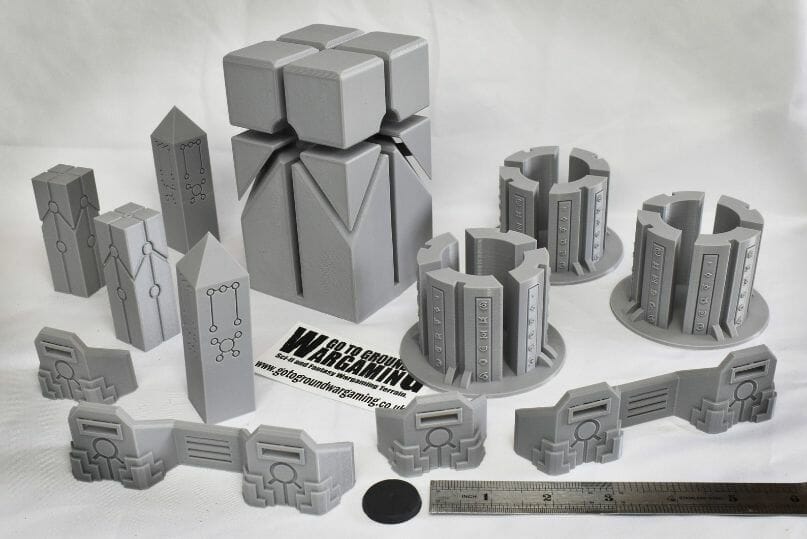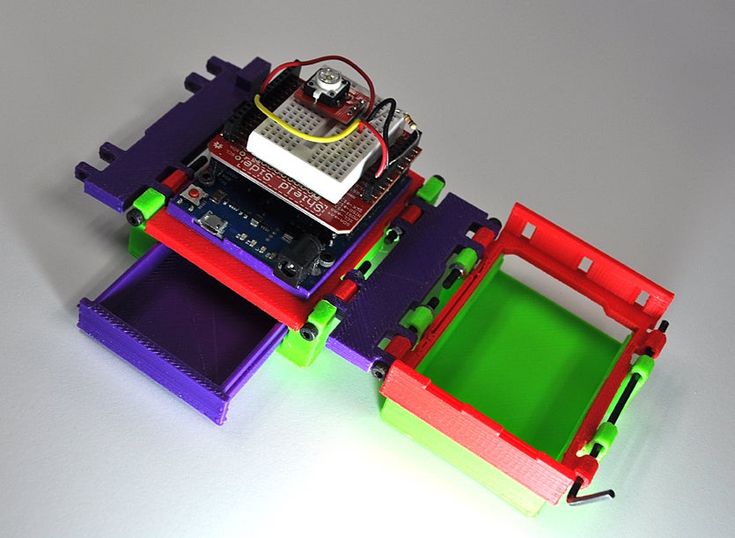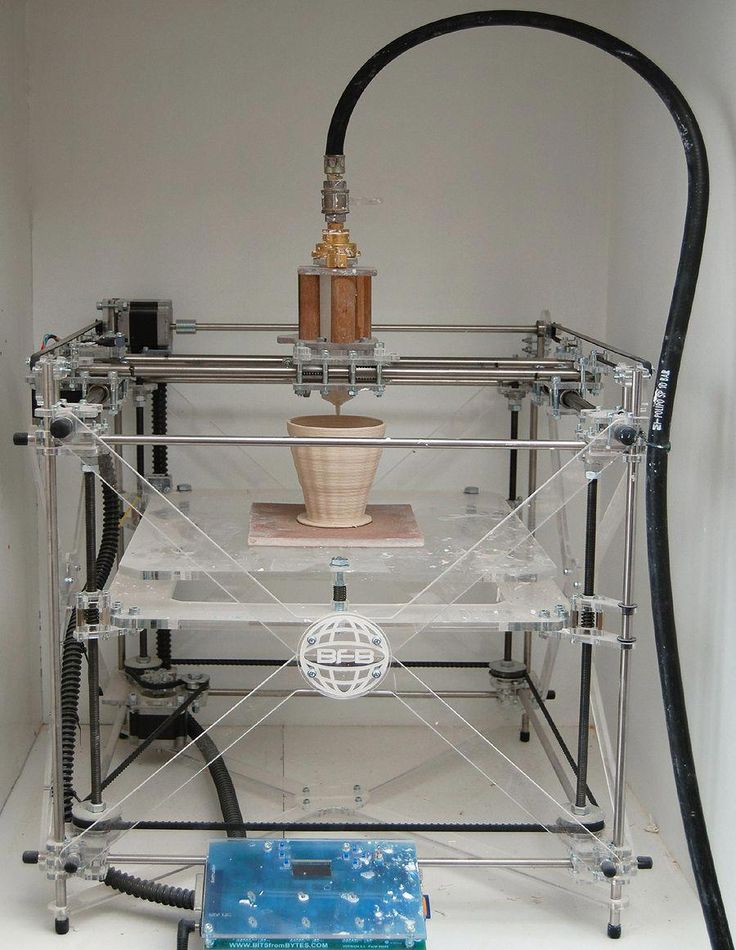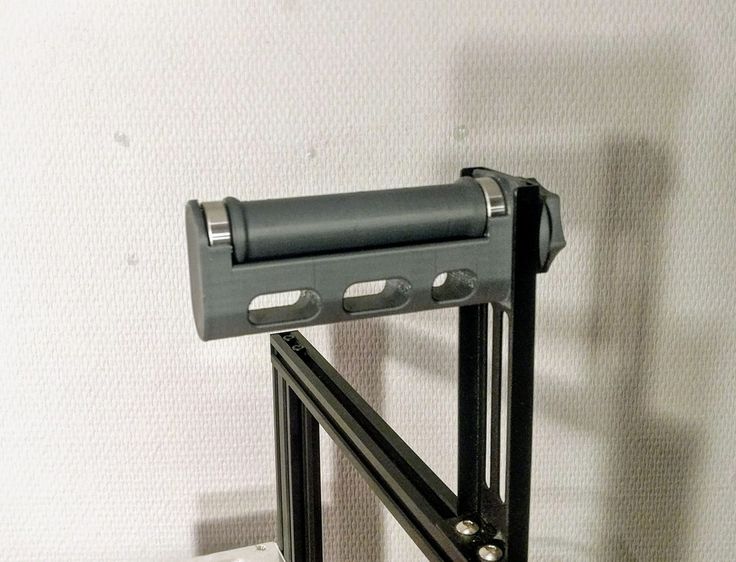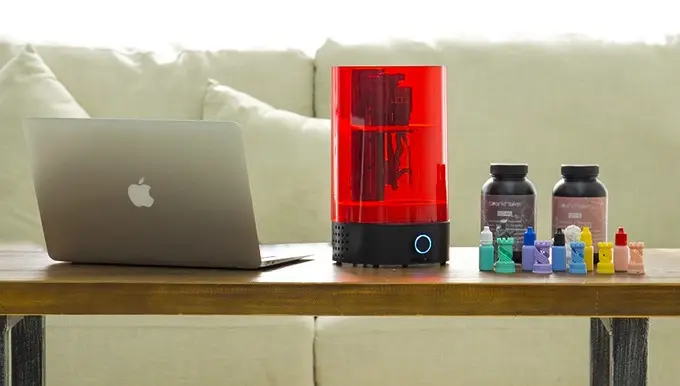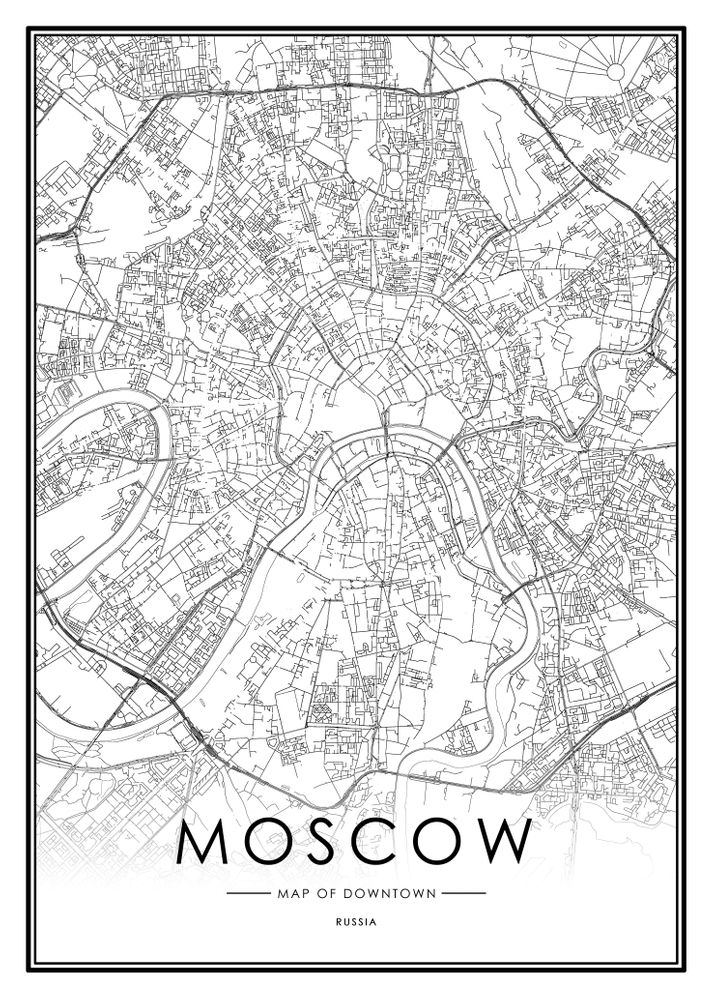The best software for 3d printing
Software for 3D Printing - 3D Modeling Software/Slicers/3D Printer Hosts
An Overview Of The Best 3D Printing Software Tools
Every 3D print begins as a 3D model generated in a modeling program. Years ago, we had to spend lots of money and time to acquire and learn modeling software. Now, there are many easy-to-use modeling software options available, many of which are free. This list includes some of the best options and is sorted by price, with the free ones sorted alphabetically.
The list also indicates whether the software uses solid modeling, a type of 3D modeling that always generates models that are “manifold” or “water tight.” A manifold model is one in which all walls of the model have some thickness, which is necessary for 3D printing. By contrast, software that uses polygon modeling can generate walls that have zero thickness; that’s fine for creating computer graphics for games and movies but not useful when 3D printing the models. Manifold models can be created with polygon modeling software, it just takes more steps and experience. All the software in this list can create 3D printable models, but every model that comes out of solid modeling software is 3D printable.
Additionally, we’ve noted what skill-level of user each software is designed for: beginners, amateurs, advanced users, and professionals. In general, the easiest to use options are near the top and the most powerful options tend to be near the bottom, though there are some outliers found throughout. Most of these software can be tried for free and there are free tutorial videos available for all of them.
Quick jump to:
3D Modeling Software
- Shapr3D
- Tinkercad
- Blender
- BRL-CAD
- DesignSpark Mechanical
- FreeCAD
- OpenSCAD
- Wings3D
- 3D Slash
- SketchUP
- Fusion 360
- MoI 3D
- Rhino3D
- Modo
- Cinema 4D
- SolidWorks
- Maya
- 3DS Max
- Inventor
Slicers & 3D Printer Hosts
- Ultimaker Cura
- Simplify3D
- Slic3r
- Repetier
- KISSlicer
- ideaMaker
- OctoPrint
- 3DPrinterOS
3D Modeling Software
These tools are all about creating models for 3D printing. Some of them are pretty easy to use while other programs are only suitable for professional users with years of experience.
Some of them are pretty easy to use while other programs are only suitable for professional users with years of experience.
Shapr3D CAD Modeling
- Price: Free, $239/year for professional
- Solid modeling: Yes
- Intended for: Beginners and Professional
- What makes it special: An intuitive multi-device CAD experience allows you to design anywhere with ease.
Shapr3D is superb for professionals and hobbyists alike. It has an extremely intuitive and innovative user interface which will allow you to create models faster with the same high level of precision.
With their Visualization feature you’ll also be able to preview models in AR to ensure that your print will be perfect in its intended location.
Shapr3D is available on iPad, Windows, and Mac – and it will keep your files synced between them! I would 100% recommend checking them out.
Tinkercad
- Price: Free
- Solid modeling: Yes
- Intended for: Beginners
- What makes it special: It’s designed to allow anyone to create 3D printable models and serves as an introduction to solid modeling.
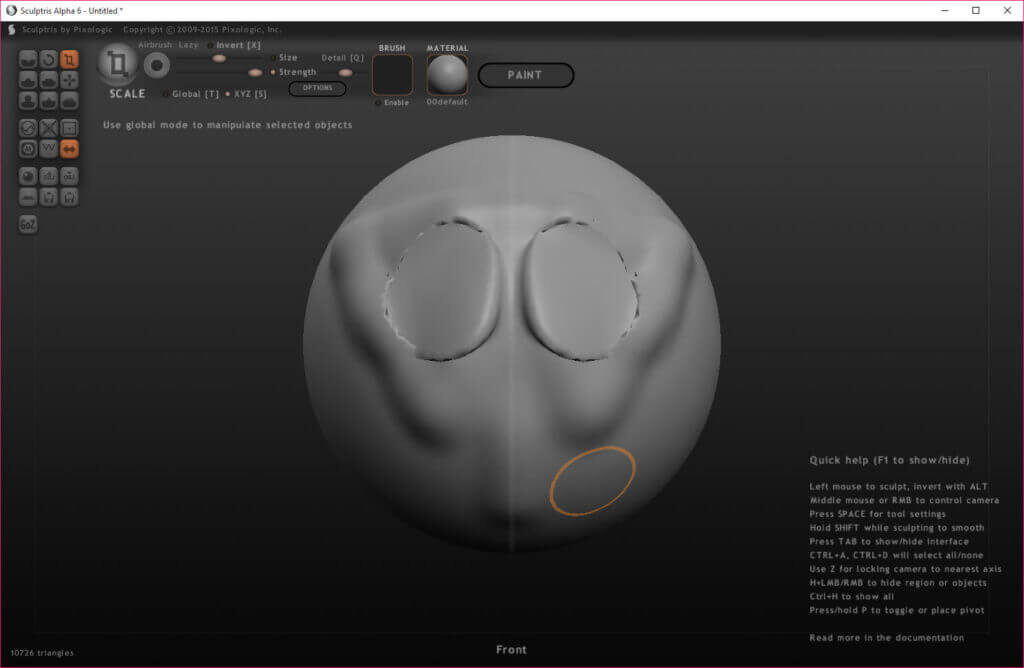
This is a browser-based 3D design app geared towards beginners. The software features an intuitive block-building concept, allowing you to develop models from a set of basic shapes. Tinkercad is full of tutorials and guides to aid any aspiring novices get the designs they’re looking for. It even allows you to share and export files with ease.
With a library of literally millions of files, users can find shapes that suit them best and manipulate them as they wish. It also has a direct integration with 3rd party printing services, allowing you to print and have your print at your door-step at the press of a button. Even though it can be a bit too simple to the point of limitation, it serves as a great way to learn about 3D modeling.
Blender
- Price: Free
- Solid modeling: No
- Intended for: Amateurs and advanced users
- What makes it special: It’s open source, feature-rich, and includes tools for sculpting, animation, simulation, rendering, motion tracking, and video editing.

In essence, Blender covers many facets of 3D creation, including modeling, animation, and simulation amongst others. This open-source software has a steep learning curve and is ideal for users who feel ready to transition to designing complex 3D models. Check out our Blender tutorials for 3D Printing page.
Blender is actually a free 3D modeling software which was originally for 3D animation and rendering using polygonal modeling techniques. Despite its origins as a software for artists, it is considered quite accessible. One of the software’s interesting features is the photorealistic rendering option. This gives the models an air of realism that few free software can achieve.
BRL-CAD
- Price: Free
- Solid modeling: Yes
- Intended for: Advanced users
- What makes it special: Developed and used by the US Army to support ballistic and electromagnetic analyses.
 Also includes ray tracing and geometric analysis tools.
Also includes ray tracing and geometric analysis tools.
This open-source software is an advanced solid modeling system with interactive geometry editing. It is apparently used by the U.S. military to model weapons systems, showing that it is quite dependable but also very advanced. BRL-CAD offers a high level of precision due to its use of specific coordinates to arrange geometric shapes.
It offers a large library of simple and complex shapes users can implement into their own designs. They can take multiple shapes and combine them at their leisure, as well. The software used to be quite costly, however it was converted to open source a few years ago. It includes over 400 tools in its arsenal. It also runs at great speeds, especially considering how dense its features are.
DesignSpark Mechanical
- Price: Free
- Solid modeling: Yes
- Intended for: Amateurs and advanced users
- What makes it special: A library of 3D models from industrial suppliers and the ability to generate a bill-of-materials for designs.
 Electrical and PCB CAD tools are also available.
Electrical and PCB CAD tools are also available.
This nifty and free CAD software is ideal for professionals and advanced hobbyists alike. The user interface is relatively straightforward and the software runs quickly, meaning efficient designing. You also have the capability to generate a bill-of-materials that calculates the cost of printing potential 3D design projects.
DesignSpark Mechanical allows users to utilise an in-built library to mix with own drawings. Another feature that new users might find useful is the pull feature that allows users to create 3D models from only a surface. It is feature-rich for a free software and quite beginner-friendly.
FreeCAD
- Price: Free
- Solid modeling: Yes
- Intended for: Amateurs and advanced users
- What makes it special: Models are fully parametric and recalculated on demand with an undo/redo stack. Other features include robotic simulation, architectural tools, and a path module for CAM (Computer Aided Manufacturing).

A parametric 3D modeling tool that is open-source and enables you to design real-life objects of any size. The parametric component makes editing your design a piece of cake. Simply go to your model history and change the parameters, and you’ll have a different model. As the name suggest, it is in fact totally free. The upside of this is that none of the tools are blocked behind a pay wall, so you can tweak your models to your heart’s desire.
It’s not the best for professional purposes, but it’s a great training tool. Despite it’s basic options and design elements it’s worth a try if you’re new and don’t want to have to invest in something before you dip your toe in the water.
OpenSCAD
- Price: Free
- Solid modeling: Yes
- Intended for: Amateurs and advanced users
- What makes it special: Designed for programmers, models are generated through typing scripts.

OpenSCAD is a free software with a ton of features and a unique way of creating models. This software takes a programming approach to 3D modeling, making it a unique addition to this list of 3d printing software tools. Instead of the traditional interactive modeling interface, users write code in a script file that describes the parameters of the 3D object. Once you’ve entered your code, you can view the shapes you’ve created by clicking a “compile” button.
Another great feature that OpenSCAD has is the ability to import 2D drawings and extrude them as 3-dimensional. It uses a part profile from drawings made in a standard sketching software and use the SXF file to do this. With its stronger focus on programming, OpenSCAD may appeal to some while alienating others. Regardless, it is still a powerful tool.
Wings3D
- Price: Free
- Solid modeling: No
- Intended for: Amateurs and advanced users
- What makes it special: Polygon modeling enables the creation of more organic shapes.
 Standard tools can be accessed through a right-click menu.
Standard tools can be accessed through a right-click menu.
Wings3D is another open-source polygon model tool. Despite being freeware, it comes with a wide range of mesh and selection tools. Tools like mirror make symmetrical modeling a breeze. Seeing as it is a program for beginners, it is very user-friendly and the learning curve is quite steady. Features like the customisable hotkeys and easy to use interface are indicative of its status as an ideal tool for starters.
Despite the ease of use, it has no shortage of useful features such as plane cut, intersect, inset, bend, sweep, circularize, and sheer, making it capable of some very impressive models. It also supports a very wide range of file formats for both import and export. Despite its simple and plain looks, it is definitely worth checking out if you’re just starting out.
3D Slash
- Price: Free web version; Premium license is $24/year and a Commercial license is $240/year
- Solid modeling: Yes
- Intended for: Beginners and amateurs
- What makes it special: Models are created through “slashing” 3D blocks away to shape them as desired.

3D Slash focuses on providing design software with a uniquely fun user interface and enough advanced features to work with a high level of precision. You can also make logos and 3D text with this software. 3D Slash is free to use and ideal for beginners, however there a range of price packages that add in features for cooperative use or commercial use depending on the needs of the consumer. Additionally, the free versions has limitations in terms of functions, higher resolutions and colours you can apply. It’s intuitive interface with a block cutting style to create shapes makes it simple enough for anyone to use.
Even if you can’t find the creative spark to start a design from scratch, there are a multitude of files available for download that you can import and then cut apart into something new. Novel features like the cursor mode that makes interior designing much easier are great additions. Aside from its ability to run on standard mode, it an can also be used with VR head sets.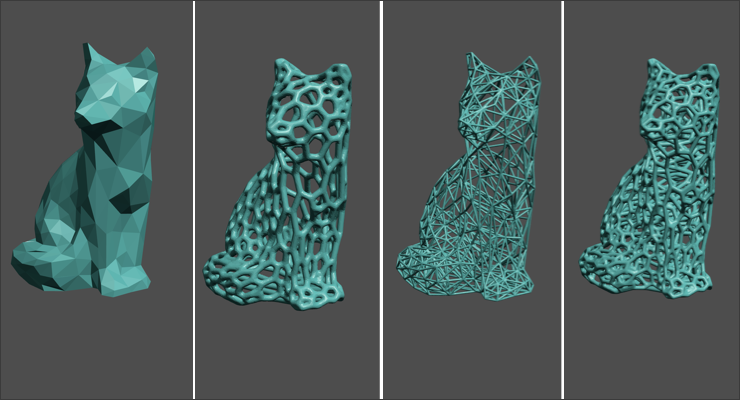 While the blockish style can be limiting in terms of range of shapes one can make and less pleasing to the eyes, it is nonetheless efficient and practical. There are few software that are as quick from concept to finish as 3D slash.
While the blockish style can be limiting in terms of range of shapes one can make and less pleasing to the eyes, it is nonetheless efficient and practical. There are few software that are as quick from concept to finish as 3D slash.
SketchUp
- Price: Free web version; Pro version is $299/year
- Solid modeling: No
- Intended for: Beginners to advanced users
- What makes it special: Intuitive and powerful, with a library of user-generated and manufacturer-produced models.
SketchUp is another good modeling software because it maintains that balance between usability and functionality, making it ideal for most skill levels. The software has an easy learning curve and there are advanced features available for professionals at an extra cost. It is especially good for designing interior and exterior architectural projects but also has tools for a diverse range of other purposes.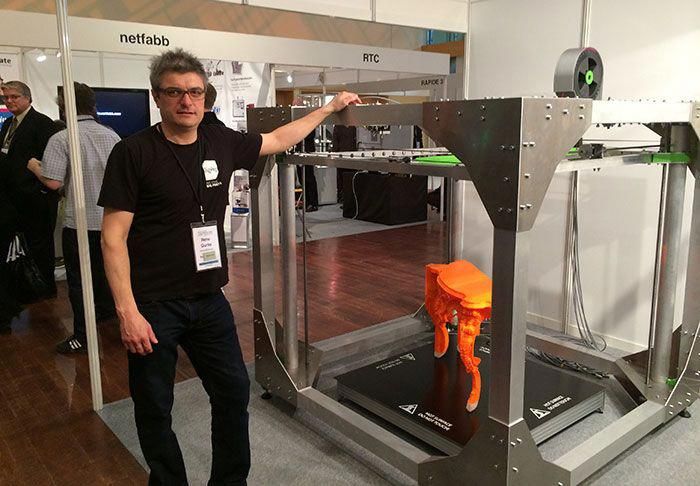
Anything complex can take quite a while, but simpler designs aren’t too time-consuming. A freeware version, SketchUp Make, and a paid version with additional functionality, SketchUp Pro, are also available.
Fusion 360
- Price: Free for personal use and startups, $595/year for commercial license
- Solid modeling: Yes
- Intended for: Amateurs to professionals
- What makes it special: Lots of features, such as tools modeling and sculpting, generative design, simulation, assemblies, collaboration, 3D printing, and CAM.
This is a unique addition to the list of 3d printing software tools. Fusion 360 is a cloud-based 3D CAD program that utilizes the power of the cloud to bring design teams together and collaborate on complex projects. Another advantage of the cloud platform is that Fusion stores the entire history of the model including the changes to it. Numerous design options are available, including freeform, solid, and mesh modeling.
Fusion 360 operates on a monthly payment subscription basis. The developers also regularly update the features, making it better as new instalments come along. It runs on multiple platforms and allows users to access their information wherever they want.
MoI 3D
- Price: $295
- Solid modeling: Yes
- Intended for: Amateurs to advanced users
- What makes it special: Can create smooth meshes from CAD models and is pen-tablet friendly.
Short for Moment of Inspiration, MoI offers a sleek UI and powerful range of CAD tools for users specializing in polygonal modeling. The program comes with advanced boolean functions that enable quick design of “hard surface” models. It is a user-friendly software that uses the NURBS modeling system.
While it isn’t free, it is cheaper than some of its competitors. It has a good amount of functions in it, yet avoids being too cluttered with pointless features. The system which uses curves and booleans makes workflow quicker as well.
The system which uses curves and booleans makes workflow quicker as well.
Rhino3D
- Price: $995
- Solid modeling: No
- Intended for: Advanced users and professionals
- What makes it special: Very powerful and full of features for modeling, analysis, rendering, 3D capture, CAM, and 3D printing.
The company behind this software markets it as the world’s most versatile 3D-modeler. The software is available for download in a variety of bundles on their website at various prices. The program uses a precise and mathematical model known as NURB, allowing you to manipulate points, curves, meshes, surfaces, solids, and more in all sorts of ways. Ultimately, given the range of design features available with Rhino3D, it’s hard to argue against its claims about unrivaled versatility in creating complex 3D models.
Users have commented on how the software can be very difficult to learn. This is a natural trade-off between capabilities and user friendly many designers have to make when creating a detailed software. While it is not the most accurate software at capturing user intent, it is one of the best on the market.
This is a natural trade-off between capabilities and user friendly many designers have to make when creating a detailed software. While it is not the most accurate software at capturing user intent, it is one of the best on the market.
Modo
- Price: $599/year or $1,799 for Perpetual license
- Solid modeling: No
- Intended for: Amateurs to professionals
- What makes it special: Procedural modeling and artist-friendly tools for modeling, animation, texturing, and rendering.
Modo provides creative 3D polygon and subdivision surface modeling tools with a lot of flexibility, allowing you to create both freeform organic models and precision meshes using the same software. This is a professional-grade program with a range of features designed for advanced 3D designers, and the price reflects this.
Even though it isn’t the most user-friendly software, it hosts a large set of features while running smoothly.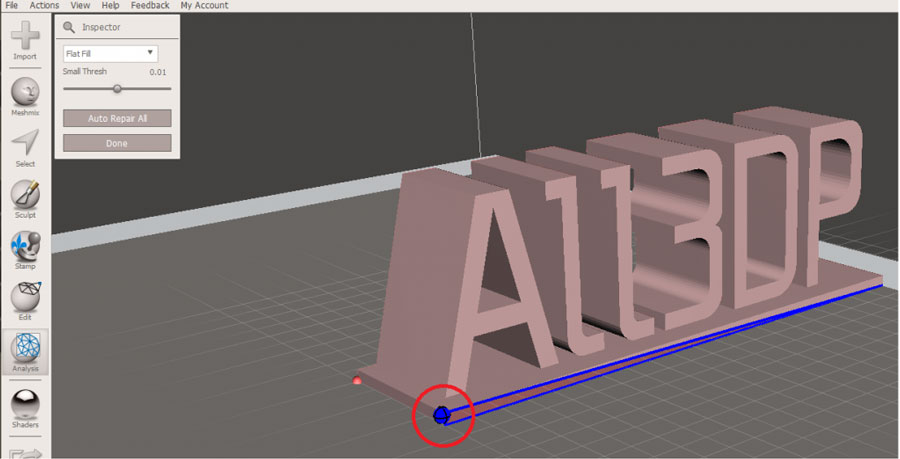 The speed of the software is particularly evident in terms of baking textures. It also works with partner software and extensions as additional customisations.
The speed of the software is particularly evident in terms of baking textures. It also works with partner software and extensions as additional customisations.
Cinema 4D
- Price: $720/year or $3,945 for Perpetual license
- Solid modeling: No
- Intended for: Amateurs to professionals
- What makes it special: An intuitive interface, parametric modeling, and procedural workflow.
This is an extremely powerful 3D modeling tool that lets you create complex 3D designs. Cinema 4D’s quite flat learning curve makes it approachable for beginners intimidated by software with advanced features. The program is regularly updated with free service packs, which help to optimize how it runs on various operating systems.
The user friendly options present the prints in very accessible ways. Scaling and shading options make modeling far easier. It’s sculpting tool is a great example of why this software is ideal for editing models and pre-existing files.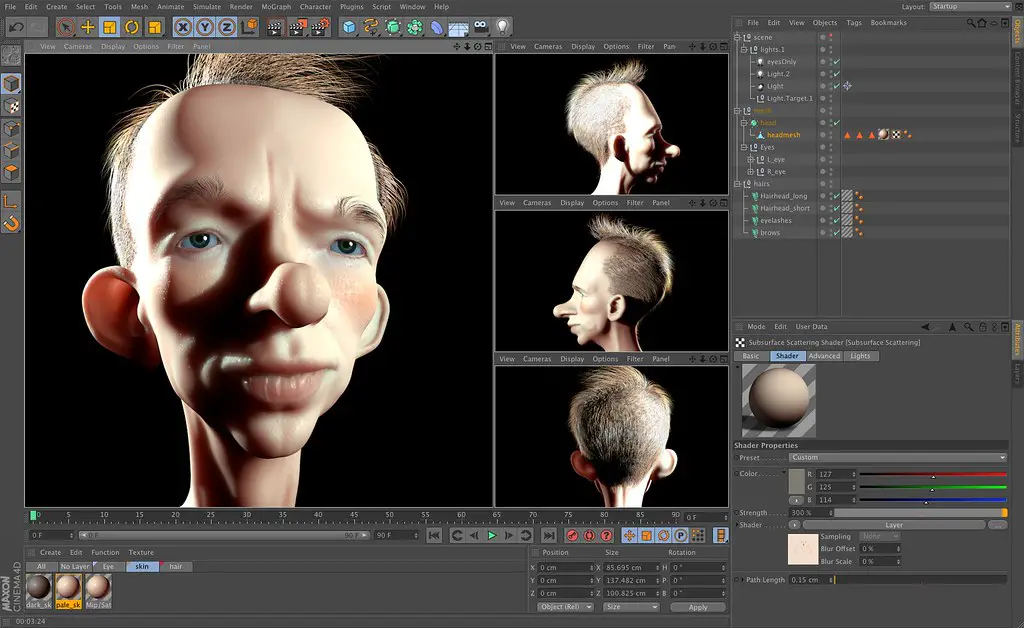
SolidWorks
- Price: $1,295/year or $3,995 for Perpetual license
- Solid modeling: Yes
- Intended for: Amateurs to professionals
- What makes it special: Powerful editing tree and tools for manufacturing, assemblies, simulation, cost estimates, CAM, and 3D printing.
Now we move on to SolidWorks. This is a CAD program often used by professional 3D designers. There are a plethora of advanced features included, such as design validation tools and reverse engineering. Solidworks comes in three distinct packages, depending on the exact features you need.
Solidworks tends towards the industrial side of things. It is practical and detailed. While most software, mimic curves through gently inclining flat structures, Solidworks uses a system of nurbs that create averages of the edges to produce fantastically detailed curvatures. It only does away with polygonal modeling, opting instead for dimensional sketching. As a result, resizing becomes far less of a hassle.
As a result, resizing becomes far less of a hassle.
Maya
- Price: $1,545/year
- Solid modeling: No
- Intended for: Advanced users and professionals
- What makes it special: Procedural effects and powerful world and character creation tools.
Primarily marketed at animation professionals, Maya is useful for many aspects of 3D modeling, especially in terms of mathematically smooth surfaces and shapes. Maya was originally slated as a 3D animation software, but is very useful in 3D printing as well. Thus, a lot of the interface options are more reminiscent of sculpting and animation.
Maya is more applicable to artistic printing requirements. It has a fast rendering engine and is best for highly detailed models with many intricacies. The downside is that it is very expensive (it is, after all, the same software used for high-budget movie CGI|). Nonetheless, it allows for realistic representations of reflection and colour on a software with smooth operation.
3DS Max
- Price: $1,545/year
- Solid modeling: No
- Intended for: Advanced users and professionals
- What makes it special: Advanced users and professionals
Another program that focuses on animation, 3DS Max offers some great 3D modeling features such as shading tools, parametric mesh modeling, and polygon modeling. This Windows only software is a favourite among video game developers, many TV commercial studios and architectural visualization studios.
Inventor
- Price: $1985/year
- Solid modeling: Yes
- Intended for: Advanced users and professionals
- What makes it special: Tailored specifically for product design and engineering applications and loaded with tools for simulation and manufacturing.
Inventor 3D CAD software offers professional-level 3D mechanical design.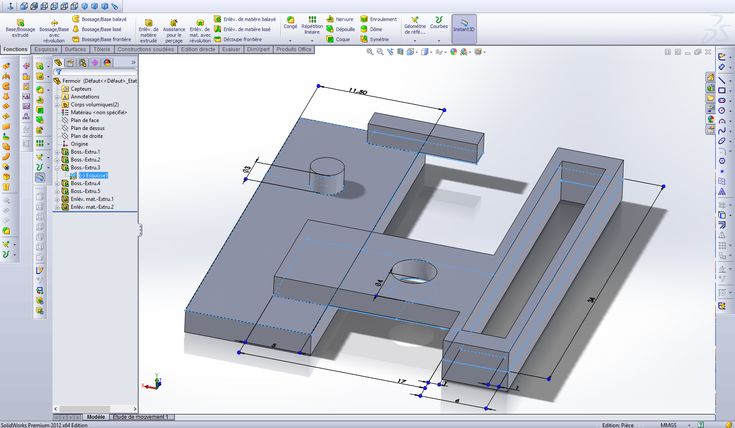 The program comes with freeform, direct, and parametric modeling choices. Furthermore, you also get automation and simulation tools.
The program comes with freeform, direct, and parametric modeling choices. Furthermore, you also get automation and simulation tools.
Developed by Autodesk, Inventor comes in different packages depending on level of proficiency (student, professional etc.). One of the great things about Inventor is how they improve the software with user feedback. New versions include improvements to visual data representation and the ability to easily reference 3rd party designs without the need to convert file formats.
Slicers & 3D Printer Hosts
The second section of this list of the best 3D printing software tools focuses on programs that help you to execute a 3D print. Slicers are the easiest way to go from a 3D model to a printed part because they take a CAD model, slice it into layers and turn the model into G-code. The slicer software also includes 3D printer settings like temperature, layer height, print speed, etc. to the G-code. The 3D printer can read this G-code and make the model layer by layer following the instructions set in the G-code.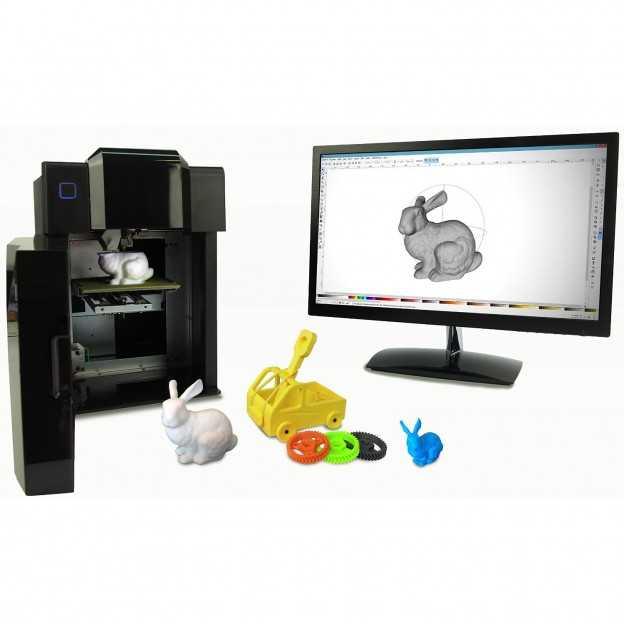
Ultimaker Cura
Despite its name, Cura can be used with almost any 3D printer because it is an open-source slicer. The program is ideal for beginners because it is intuitive and fast. Most of all, it’s easy to use. More advanced users can access a further 200 settings to refine their prints.
Simplify3D
Simplify3D is an extremely powerful premium slicing tool that helps you drastically improve the quality of 3D prints. Not only does Simplify3D slice your CAD into layers, it also corrects any problems with your models and allows you to preview the end result, helping to further identify any other issues. Advanced users will need to decide if the premium features are worth paying for compared to open-source slicers.
Slic3r
This open-source software includes real-time incremental slicing, 3D preview, and more. It is one of the most widely used 3D printing software tools. The incremental real-time slicing ensures that when you change a setting, the slicing doesn’t need to start from scratch. Only the G-code for affected parts is recalculated. The end result is a fast, flexible, and precise slicing program.
Only the G-code for affected parts is recalculated. The end result is a fast, flexible, and precise slicing program.
Repetier
This open-source slicer software supports three different slicing engines; Slic3r, CuraEngine, and Skeinforge. Repetier can also handle up to 16 extruders with different filament types and colors simultaneously, and you can visualize your end result before printing. There is a lot of customization and a lot of tinkering involved, making Repetier ideal for more advanced users. You also get remote access to your printers with Repetier host.
KISSlicer
This slicing software does its job well, although the user interface is somewhat basic. Still, if you just need a slicer that delivers great results, use KISSlicer. Note that the basic version is for single-head machines only. You’ll need a PRO version for multi-head machines.
ideaMaker
This free slicer is distributed by Raise3D and provides fast, simple slicing for most 3D printers. Team members can share print profiles and supports can be automatically or manually placed. The adaptive layer height tool allows the software to adjust layer height depending on the level of detail in the model, maximizing print quality while minimizing print time. Remote monitoring and control is also available.
Team members can share print profiles and supports can be automatically or manually placed. The adaptive layer height tool allows the software to adjust layer height depending on the level of detail in the model, maximizing print quality while minimizing print time. Remote monitoring and control is also available.
OctoPrint
A free open-source web-interface that allows for remote control and monitoring of 3D printers. It’s compatible with most 3D printers and allows users to watch their prints with an embedded webcam feed. Prints can be started, paused, and stopped remotely, and plugins are available to track print statistics and send push notifications on job progress.
3DPrinterOS
This nifty cloud 3D printer management software comes at a cost. The essential idea is the management of the entire 3D printing process with one platform. Users can edit and repair designs, slice STL files from the cloud, and even send files for printing from anywhere in the world.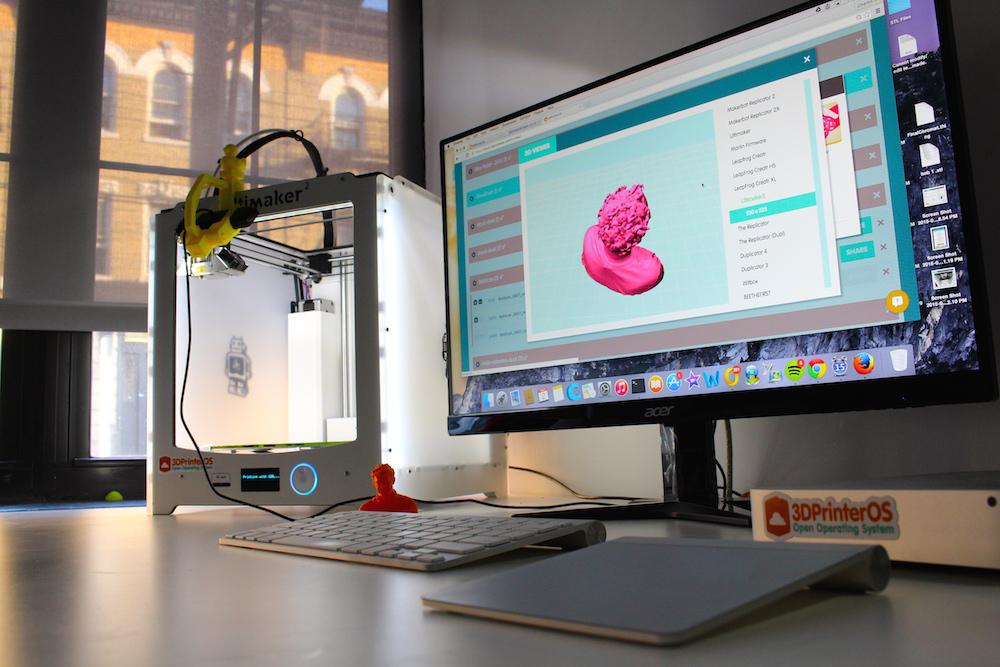 The software also features the capability to share CAD files.
The software also features the capability to share CAD files.
18 Best 3D Printing Software in 2022 [CAD Tools] • Filmmaking Lifestyle
3D printing is a process of making three dimensional solid objects from a digital file. It is also called additive manufacturing.
The word 3D printing has been used to describe a wide range of additive processes, in which material is added together to create an object.
3D printing (additive manufacturing) can make parts that are difficult or impossible to make with traditional machining. In this article, we will discuss about 3D printing software and its types.
3D printing software is a software that helps you in designing 3D models and then converting them into 3D printing files.
This software also allows you to edit, manipulate and optimize your model before sending it to the printer.
There are many types of software available on the market today.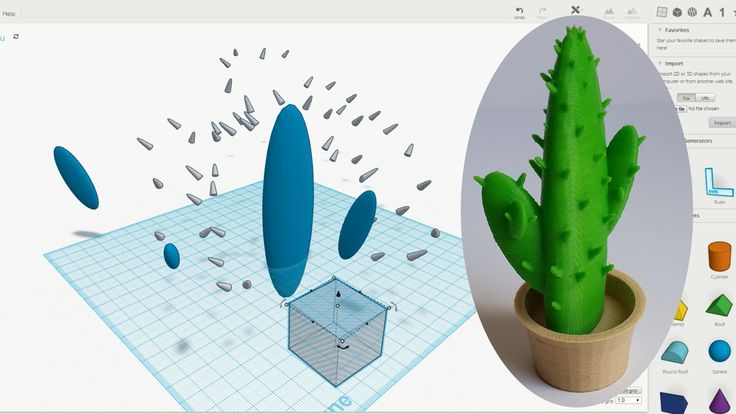 Each of them has its own unique features and may be suitable for different purposes.
Each of them has its own unique features and may be suitable for different purposes.
3D printing software is basically used to convert a digital design into a physical object via a printer or other manufacturing machine.
You can use this software to create models that are complex in nature, such as tools and other equipment used in various industries.
It can also be used for entertainment purposes, such as creating toys for kids or even sculptures for decoration purposes.
Best 3D Printing Software: IntroductionWhat is the Best 3D Printing Software?1. Autodesk Fusion 360
Autodesk Fusion 360 is a cloud-based 3D CAD, CAM, and CAE platform for product development.
It combines industrial and mechanical design, simulation, collaboration, and machining in a single package.
The tools in Fusion 360 enable fast and easy exploration of design ideas with an integrated concept-to-production toolset.
It is the first 3D CAD, CAM, and CAE tool that connects your entire product development process in a single cloud-based platform that works on both Mac and PC.
Features3D modelling tools – Autodesk Fusion 360 provides 2D sketching tools to create 3D solids using either T-Splines or NURBS.
The toolset allows users to build parametric models that can be later modified easily and quickly.
Assembly modelling – The module allows users to work with multiple models in a single project.
It features an assembly navigator that helps users keep track of the project’s various components.
Users can create complex assemblies using the toolset and then simulate their behaviour in different environmental conditions.
Design analysis – Autodesk Fusion 360 has powerful design analysis tools that allow users to test their designs under various conditions.
Users can check for thermal expansion and contraction, strength, stress drop, vibration, etc.
The design may also be tested against specific material properties and be simulated in natural environmental conditions such as temperature or humidity.
CAM tools – Autodesk Fusion 360 includes CAM tools that allow designers to translate their models into machine code
ProsAutodesk Fusion 360 allows you to design and create on a single platform. It’s not just a 3D modelling tool.
It also allows you to do 2D drafting, simulation and animation.
Autodesk Fusion 360 is an excellent solution for startups because it allows you to be agile and dependent while scaling your business.
You can use it on any device – Mac or PC. It can do 3D modelling and 2D drafting.
It is great for startups because of its friendly pricing model and Tight integration with Autodesk Eagle PCB.
There’s an active community of users who can help you learn!
2. Autodesk AutoCADAutodesk® AutoCAD® 360 — the official AutoCAD® mobile app.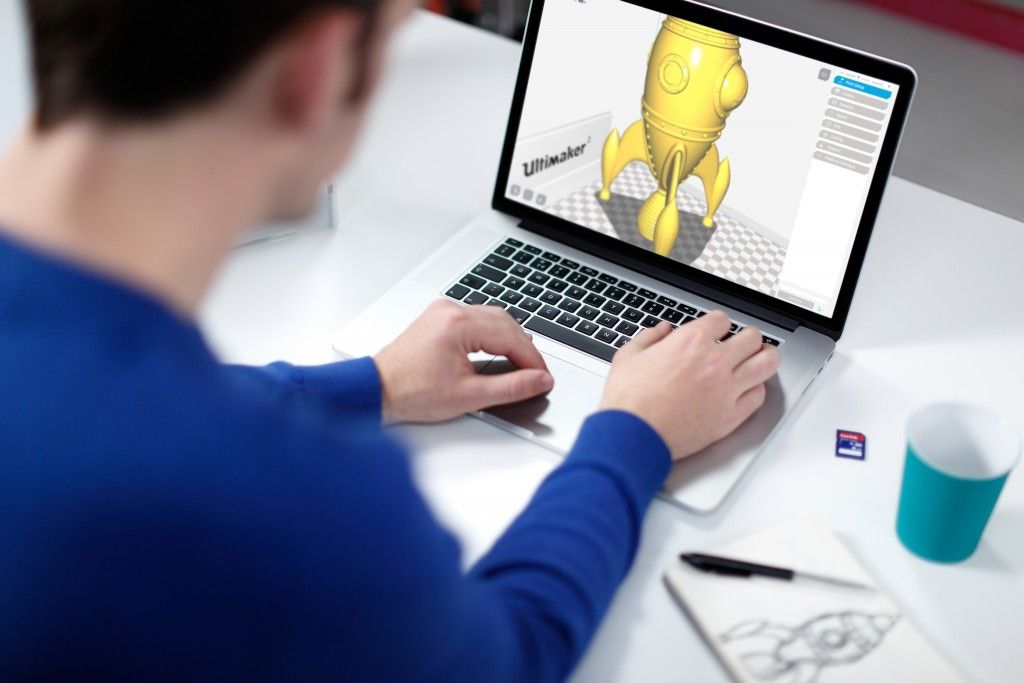 Take the power of AutoCAD wherever you go!
Take the power of AutoCAD wherever you go!
AutoCAD 360 is a freeDWG viewing application with easy-to-use drawing and drafting tools that allow you to view and measure AutoCAD drawings across web and mobile devices – anytime, anywhere.
Simplify your site visits with the most powerful drafting and editing tool available—Drawing Viewing Open and view.
DWG files directly from email or external storage. Review drawings at every stage of a project—at the office, in the field, or on the go.
Navigate large drawings easily using Multi-Touch zoom, pan and 3D orbit.
You can also switch to 2D wireframe mode for faster performance on complex geometry or when working with large assemblies of blocks or refs.
Editing Drawing Create new drawings on your mobile device and continue working on your design seamlessly across platforms.
Add text notes to your drawing mark-ups directly on your portable device, or attach voice notes to individual drawing elements.
Easily mark up drawings using drawing markup features such as Line, Circle, Polyline, Arrow and more to highlight areas of concern in a
FeaturesAutodesk AutoCAD features include an updated modern interface that improves the design process and productivity enhancements that help speed your work.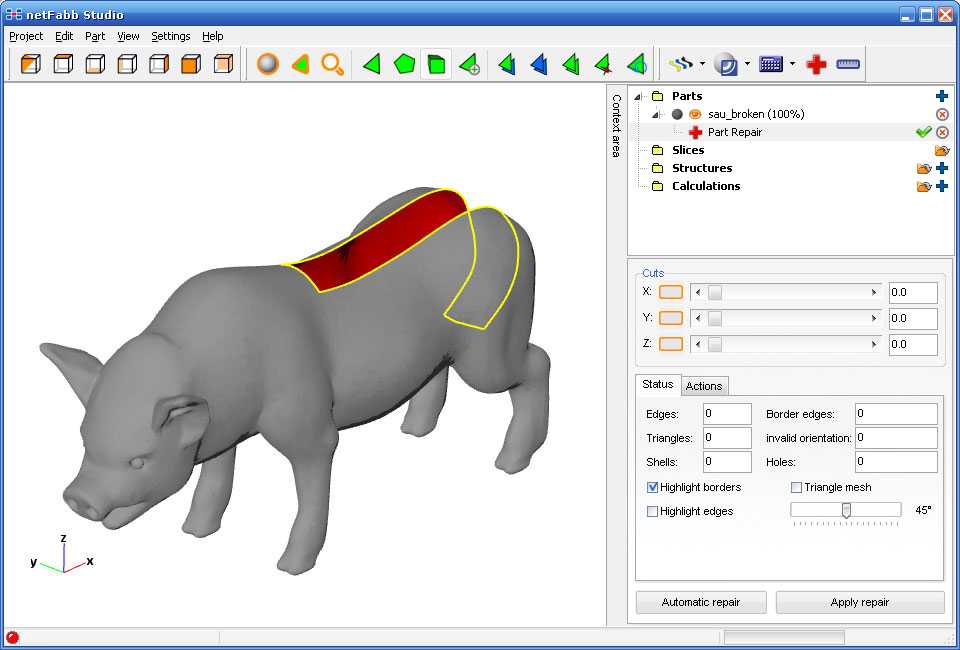
Intuitive user interface A modern, updated interface optimises the design process.
The new dark theme is more accessible to the eyes, and many time-saving enhancements speed up daily tasks.
Collaboration tools Share models and work with stakeholders more efficiently by publishing, viewing, and commenting on designs with the AutoCAD web and mobile apps.
Creation and annotation of 3D models
Create industry-standard CAD drawings with a complete set of drawing, editing, annotation, and sharing tools.
Customisation and automation
Use one of the many available add-on applications to expand your software’s capabilities. Create custom palettes for toolsets that are relevant to your workflow.
Pros
What is the Autodesk AutoCAD?
The Autodesk AutoCAD is a computer-aided design (CAD) program that allows users to create complex 2D and 3D drawings.
It is used in several industries, including architecture, engineering, construction (AEC), manufacturing, media, and entertainment.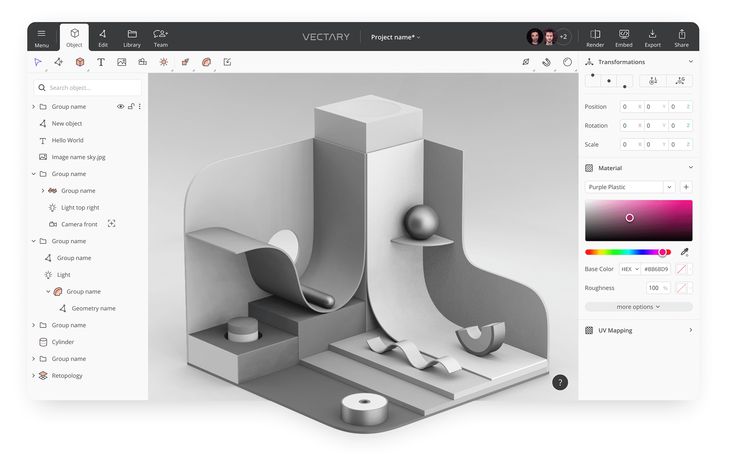
Autodesk has been around since 1982. They’re known for their 3D modelling software such as Maya, 3ds Max, and Revit.
What are the benefits of using Autodesk AutoCAD?
Autodesk AutoCAD has many different features that are useful to its users. Here are a few of those features:
It is compatible with 2D CAD files and also includes advanced tools for 3D modelling. You can use it to create photorealistic visualisations for your project.
It can be used with other programs like Adobe Photoshop to create stunning visuals for presentations or marketing materials
3. Ultimaker CuraUltimaker Cura is a free, easy-to-use 3D printing software that integrates with your Ultimaker printer and comes with valuable features.
Ultimaker Cura is a free, easy-to-use 3D printing software trusted by millions of users.
Fine-tune your 3D model with 400+ settings for the best slicing and printing results. Ultimaker Cura provides the easiest way to prepare your model for 3D printing.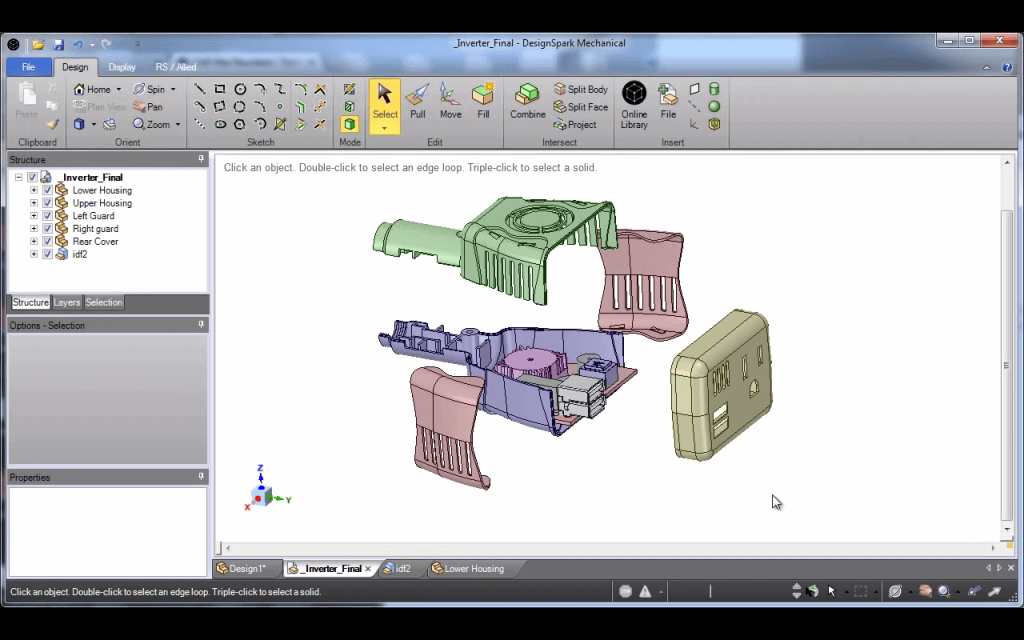
Once imported, you can adjust the size and orientation of the model, add supports if needed, and slice it for printing.
Import STL files created with CAD and drafting software.
Use the preview function to see a scaled view of the print layer by layer and estimate how long it will take to print.
Then transfer files via USB or Wi-Fi to your Ultimaker or save them on a MicroSD card.
Ultimaker Cura is a free, easy-to-use 3D printing software trusted by millions of users. Ultimaker Cura prepares your model for 3D printing.
It translates 3D models into instructions your printer understands.
Better instructions mean better prints, so a simple software upgrade makes all the difference.
Features Cura, the 3D printing software you can download for free from Ultimaker’s website, has been a significant force in the DIY 3D printing economy, especially among educators and makers.
Although it’s primarily meant as a production tool, its ease of use has made it attractive to those who want to experiment with 3D printing without investing thousands of dollars in kits and printers.
Here are some key features of Cura: Automatic support structure detection.
Using Cura’s automatic support structure detection, you can choose your support material or leave the designs intact. You sliced object build platform.
Suppose you have another computer (or a Mac or Linux machine).
You can export your Slicer creations with another slicer — like Meshmixer – which lets you slice complex models into separate object files, which Cura then imports into the slicing interface.
Smart materials.
Cura comes with four default materials, including PLA filament and PVA glue stick, but there’s also a library of over 100 different types of filament that you can find and use.
ProsI am really a big fan of Ultimaker Cura.
I would also like to thank Ultimaker for providing it for free. For me, it’s the best free slicer available at this moment.
It has a beautiful user interface and works very fast on my computer.
I am using it mainly for PLA, but it also does well on ABS. Cura offers different settings with different speeds, print quality and print time.
Cura offers different settings with different speeds, print quality and print time.
I have used the default setting for PLA, and the quality of the prints is excellent.
You can also add your own settings for different filaments or adjust the existing ones.
The support structure can be easily enabled or disabled and you can choose between standard or emotional build plate support.
There are many other settings available, and all of them are easy to use & understand.
The 3D preview is also perfect, and you can easily view your object from any side while adjusting different parameters and checking how they affect your model before printing it.
4. TinkerCADTinkercad is a free, easy-to-use app for 3D design, electronics, and coding. It’s used by teachers, kids, hobbyists, and designers to imagine, design, and make anything!
An excellent tool for both beginners and experienced makers.
Use Tinkercad to easily create 3D objects that can be laser cut or 3D printed.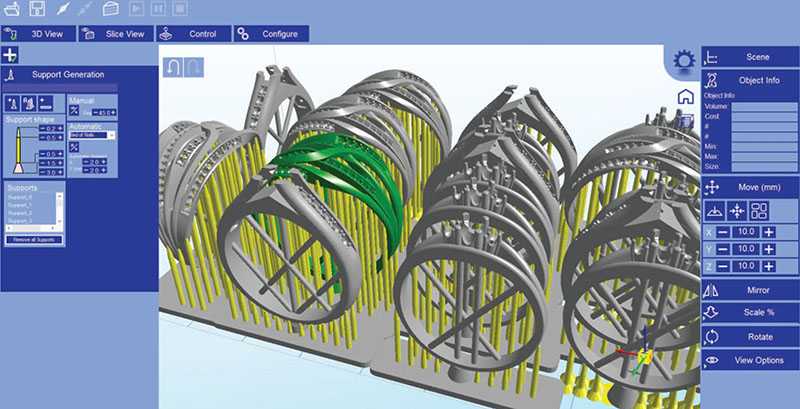
Tinkercad is a quick and easy way to design files for a laser cutter. Start planning your own models in minutes – no experience required!
3D design for 3D printing Beginners and pros use Tinkercad to make toys, prototypes, home decor, Minecraft models, and jewellery – the list is truly endless.
Easy to learn Tinkercad is used by designers, hobbyists, teachers, and kids, to make toys, prototypes, home decor, Minecraft models, and jewellery – the list is truly endless!
Designed for all ages, Tinkercad is an easy-to-use tool for creating digital designs that are ready to be 3D printed into physical objects.
Since it runs in a web browser, you don’t have to download anything to your computer. All you need is an active internet connection.
FeaturesTinkerCAD Features: Simple, easy to use interface Easy to learn for beginners and powerful for advanced users Library of basic shapes, including text and numbers Unlimited extrusion in all directions Grouping, nesting and duplicating objects.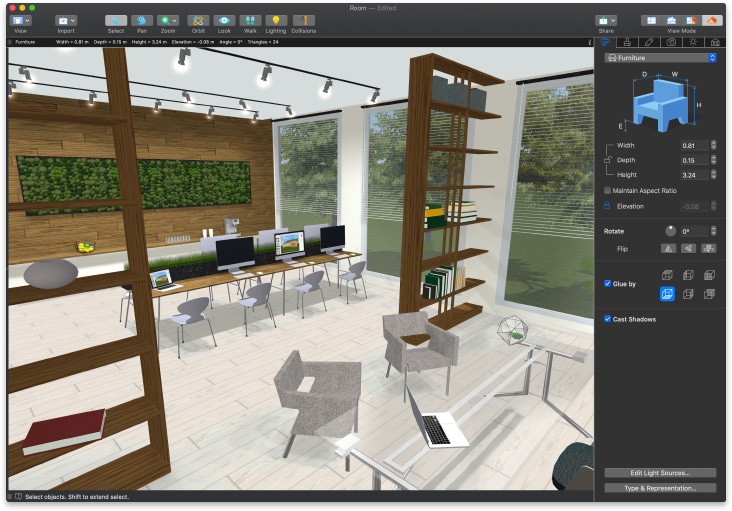
Downloading 3D designs in a variety of formats, including.STL and.OBJ
ProsTinkercad is a simple and easy-to-use online 3D design and 3D printing app for everyone. Tinkercad is used by designers, hobbyists, teachers, and kids. It’s used to make toys, prototypes, home decor, Minecraft models, and jewellery – the list is truly endless!
Tinkercad is free of charge and requires no download. You only need a web browser and an internet connection to get started.
Tinkercad is easy enough for anyone to learn quickly and powerful enough to grow with any skill level.
Designing in 3D has never been easier! With Tinkercad, you can quickly turn your idea into a CAD model for a 3D printer. Try it out today!
5. MeshLabMeshLab is an open-source, portable, and extensible system for the processing and editing unstructured 3D triangular meshes.
The system is aimed to help the processing of the typical not-so-small unstructured models arising in 3D scanning, providing a set of tools for editing, cleaning, healing, inspecting, rendering and converting these kinds of meshes.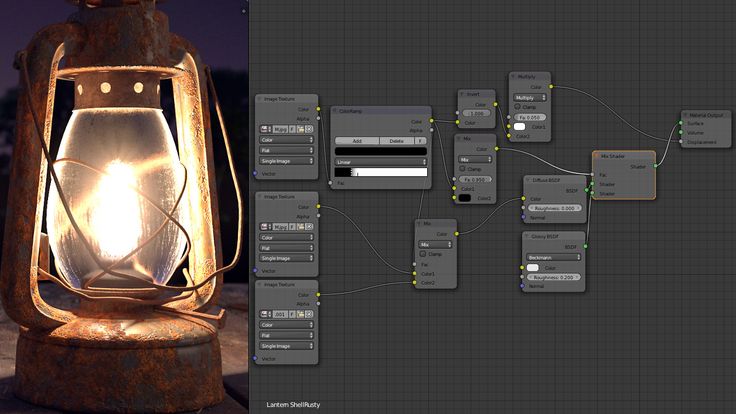
The system is heavily based on the ideas of mesh visibility and mesh layers. In MeshLab, all the parameters needed for the various filters are available in a unique user interface called Floating Panel.
The project’s primary purpose is to offer tools that allow you to process substantial unstructured 3D models without crashing your computer.
We have also tried to make as many as possible general-purpose filters available so that they can be helpful to also to other people.
The project has been developed by the Visual Computing Lab of ISTI – CNR (www.vcg.is.cnr.it) with partial support from the European Community through its Sixth Framework Program (FP6) contract N° 026007 – Visual Media project.
FeaturesMeshLab is an open-source, portable, and extensible system for the processing and editing unstructured 3D triangular meshes.
The system is aimed to help the processing of the typical not-so-small unstructured models arising in 3D scanning, providing a set of tools for editing, cleaning, healing, inspecting, rendering and converting these kinds of meshes.
The main features offered by MeshLab are:
- Processing of unstructured 3D triangular meshes with the automatic repair;
- A set of filters to edit, clean and convert meshes;
- A visual programming interface to combine filters;
- A comprehensive collection of mesh analysis tools;
- Import/export various file formats; Rendering with OpenGL shaders.
Hello and welcome to MeshLab Pros! This is the first of many MeshLab Pro episodes on YouTube.
We’re going to try and put out a new episode every other week, so if you enjoy what we’re doing, please subscribe to our YouTube channel and hit the “Like” button on this episode.
This will help us out tremendously in getting more exposure to these videos. We’ll do our best to keep things short and sweet, but sometimes we can’t help ourselves when discussing 3D scanning technology!
If you have any questions or comments, please leave them below, and we’ll get back to you as soon as possible.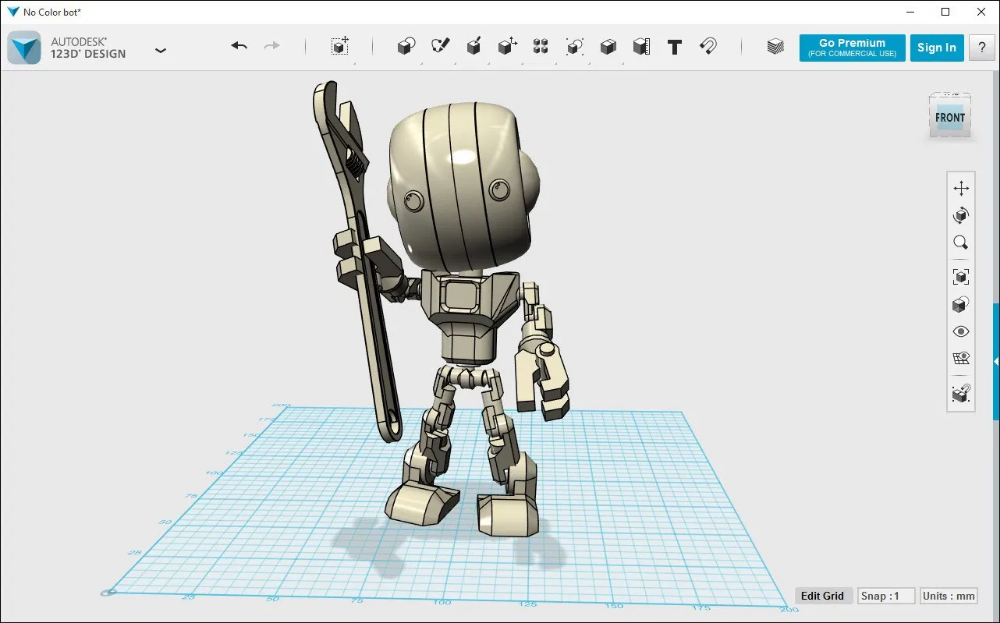
MeshLab Pros:
- Open Source
- Free
- Compatibility
- Customisation *Features
MeshLab
MeshLabthe open source system for processing and editing 3D triangular meshes.
It provides a set of tools for editing, cleaning, healing, inspecting, rendering, texturing and converting meshes. It offers features for processing raw data produced by 3D digitization tools/devices and for preparing models for 3D printing.
Try MeshLab
We earn a commission if you make a purchase, at no additional cost to you.
6. FreeCADSummary
FreeCAD is a general-purpose parametric 3D CAD modeller.
Parametric modelling allows you to easily modify your design by going back into your model history and changing its parameters.
FreeCAD is open-source and highly customisable, scriptable and extensible.
Initially designed for mechanical design, it also provides electrical, fluid, civil and architectural design tools.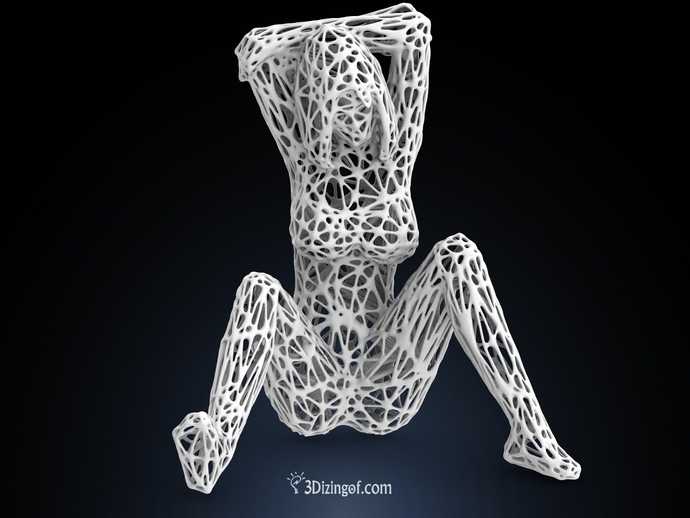
FreeCAD is aimed directly at mechanical engineering and product design and fits in a broader range of uses around engineering, such as architecture or other engineering specialities.
It is a feature-based parametric modeller with modular software architecture, making it easy to provide additional functionality without modifying the core system. FreeCAD is based on OpenCasCade.
A powerful geometry kernel features an Open Inventor-compliant 3D scene representation model provided by the Coin 3D library and a broad Python API.
The interface is built with Qt. FreeCAD runs exactly the same way on Windows, Mac OSX and Linux platforms FreeCAD is a mature open-source project developed by a large community of experts.
It can be used right away by anyone interested in 3D modelling.
FeaturesFreeCAD is a general-purpose feature-based, parametric 3D modeller for CAD, MCAD, CAx, CAE and PLM, aimed directly at mechanical engineering and product design and fits a broader range of uses in engineering such as architecture or other engineering specialities.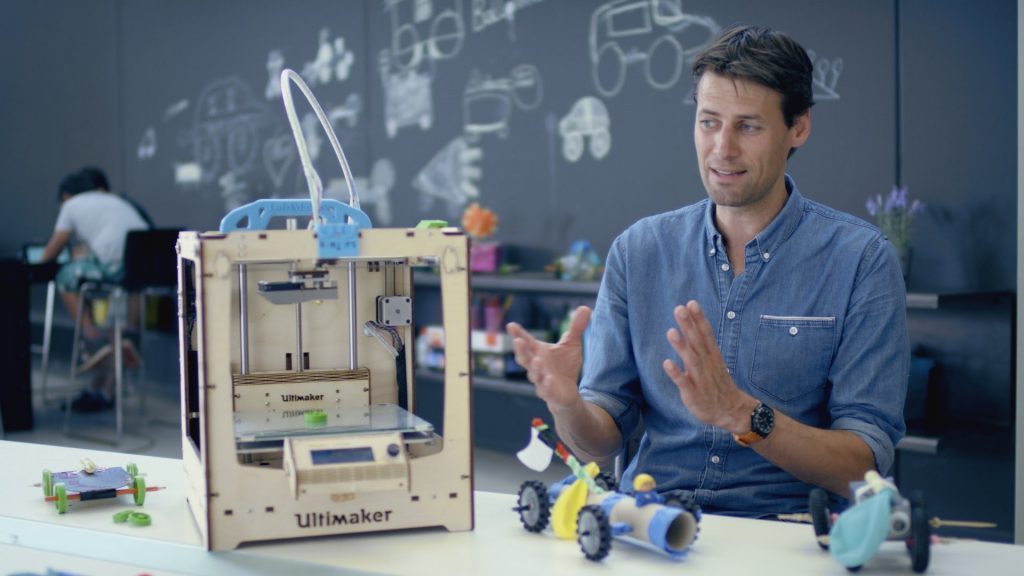
Its main features are General Completely Open Source (LGPL License), Highly customisable and extensible through its own Python API. Works on Windows, Mac OSX and Linux.
Modular architecture with more than 100 workbenches to choose from. Open Source community supported by a dedicated Foundation.
Parametric modelling allows you to easily modify your design by going back into your model history and changing its parameters.
FreeCAD allows you to sketch geometry constrained 2D shapes and use them as a base to build other objects.
It contains many components to adjust dimensions or extract design details from 3D models to create high-quality production-ready drawings.
ProsCreo makes it easy to create beautiful posts. It’s simple, powerful, and fun! Creo lets you share with friends and family and make your mark on the web.
Creo is built by a small team spread around the globe. Creo was founded by John Doe in 2010.
Creo is the first and only product that combines proven behaviour change methods with cutting-edge technology.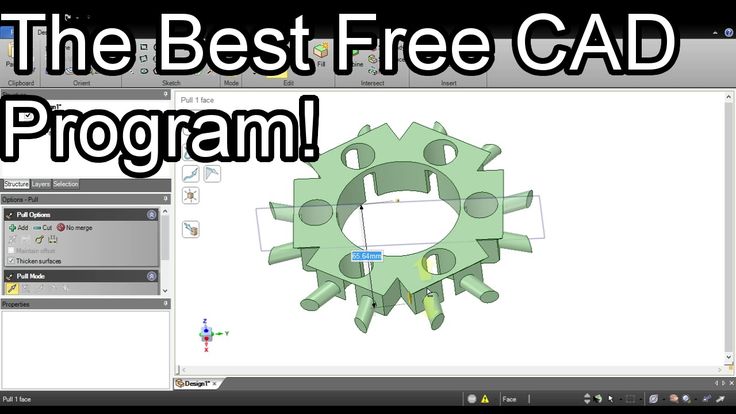
Creo helps you overcome addictive behaviours by providing a supportive community and personalised recovery programs.
7. CreoCreo is a desktop application developed by PTC, Inc. It was acquired by Parametric Technology Corporation in 2010 and later renamed Creo.
Creo is a family or suite of Computer-aided design (CAD) apps supporting product design for discrete manufacturers and is developed by PTC.
The suite consists of apps, each delivering a distinct set of capabilities for a user role within product development. Initially developed as Pro/ENGINEER in 1998, Creo Elements/Pro has been the name of the core mechanical design software in the suite since late 2010.
Other applications included in the suite are Creo Parametric, Creo Simulate and Creo View.
A free version of Creo is available for students worldwide to download called Creo Elements/Direct Modeling Express 6.0.
It is available both as Windows and Linux versions.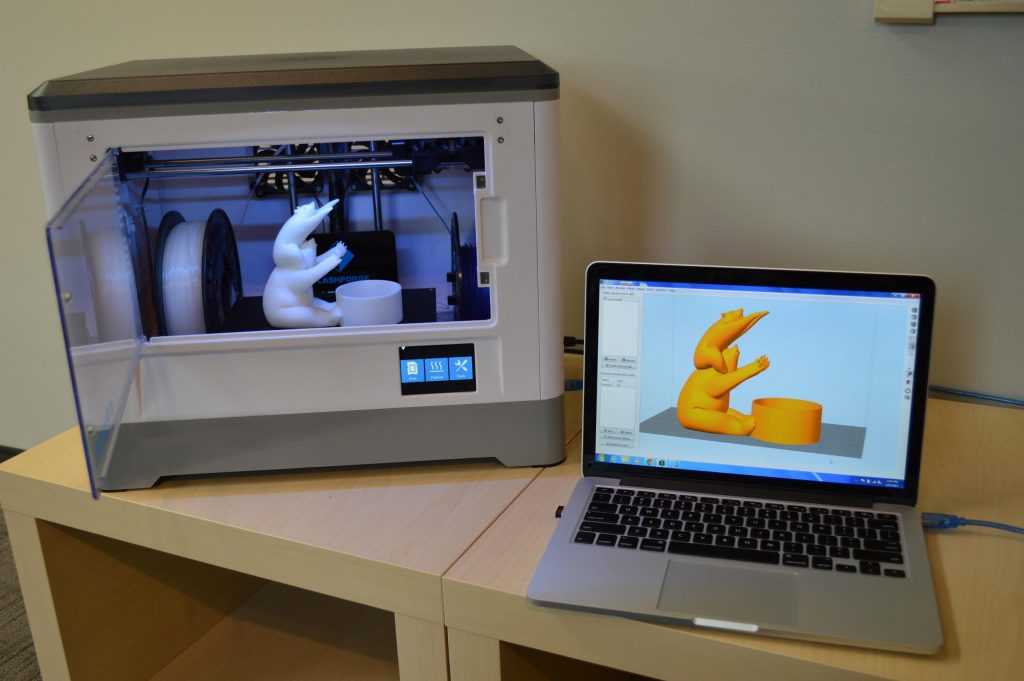 The latest release is Creo 5.0, announced on April 4, 2018, and was released on May 31, 2018.
The latest release is Creo 5.0, announced on April 4, 2018, and was released on May 31, 2018.
Creo is a set of software applications used to design products. It uses a parametric feature-based technique to create models and assemblies.
It uses the open JSON (JavaScript Object Notation) standard for its 3D manufacturing format, allowing greater interoperability between applications.
The latest version of Creo (Creo Parametric 5.0) was released in April 2017.
Features
In this course, you are introduced to the Creo Parametric modelling environment. You will learn to create and modify sketched and placed features, including datum features.
You will use patterned, mirrored, and copied features. You will also create reference geometry by using construction geometry and reference sets.
ProsHi there, I’m a paragraph. Click here to add your own text and edit me. It’s easy. Just click “Edit Text” or double click me to add your own content and change the font.
Feel free to drag and drop me anywhere you like on your page. I’m a great place for you to tell a story and let your users know a little more about you.
This is a great space to write long texts about your company and services. You can use this space to go into a little more detail about your company.
Talk about your team and what services you provide. Tell your visitors the story of how you came up with the idea for your business and what makes you different from your competitors. Make your company stand out and show your visitors who you are.
A picture is worth a thousand sales. An image speaks volumes about your brand. We love hearing about your projects, big or small!
High definition images can make your products stand out from the crowd. Our goal is to help you show off your products in their best light.
8. SolidworksSolidWorks is a solid modelling computer-aided design (CAD) and computer-aided engineering (CAE) computer program on Microsoft Windows.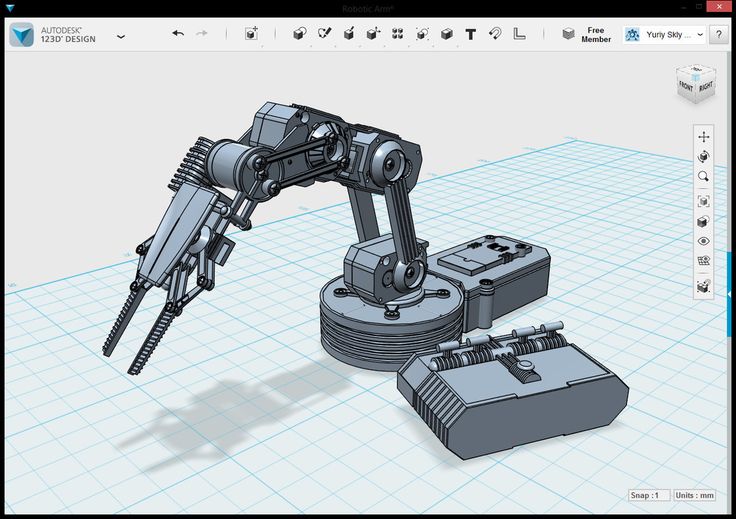 SolidWorks is published by Dassault Systèmes.
SolidWorks is published by Dassault Systèmes.
According to the publisher, over 2 million engineers and designers at more than 165,000 companies were using SolidWorks as of 2013.[2] Also, according to the company, the fiscal year 2011–12 revenue for SolidWorks totalled $483 million.
The company was founded in December 1993 by Massachusetts Institute of Technology graduate Jon Hirschtick.
Hirschtick used the $1 million he had made while a member of the MIT Blackjack Team to set up the company.
Operating later from Concord, Massachusetts, SolidWorks released its first product SolidWorks 95, in November 1995. In 1997 Dassault, best known for its CATIA CAD software, acquired SolidWorks for $310m.
The company had been able to raise $45m before the acquisition.
Jon Hirschtick stayed on board for the next 14 years in various roles. Under his leadership, SolidWorks grew to a $100m revenue company.
Under Dassault Systèmes, SolidWorks became mainstream software with an estimated 300,000+ users [4
FeaturesSolidworks is the leading 3D software used by engineers and architects, but it’s also an excellent program for designers and artists.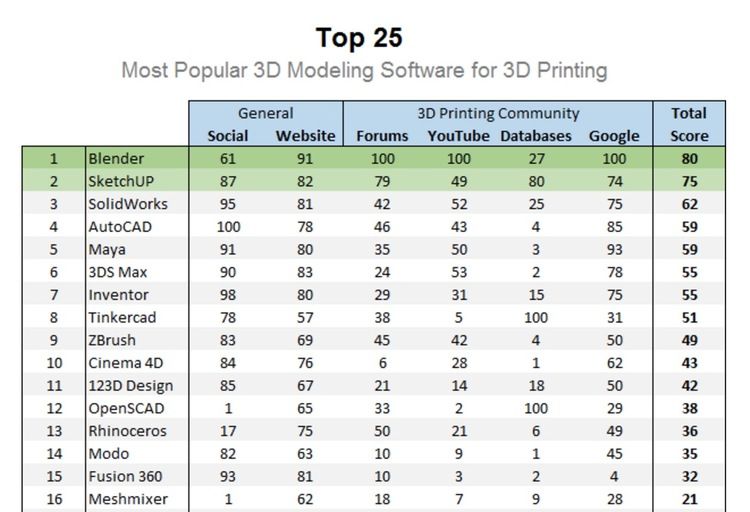 It’s available on Macs, Windows PCs and Linux computers.
It’s available on Macs, Windows PCs and Linux computers.
SolidWorks features include:
- Many design tools helps you create everything from complex engineering drawings to photo-realistic artwork.
- A powerful CAM system allows you to create highly intricate models that can be accurately duplicated.
- A powerful yet easy-to-use 3D solver allows you to find the optimal solution in your designs without trial and error.
It’s an excellent time to be a CAD user. (That even rhymes!) The past year has seen an explosion of innovation in the CAD software space, with updates and new releases that have improved performance, increased usability, and added significant new capabilities.
Here are my top 5 favourite things about working in CAD today.
- Beginner’s Mode
- Parameter Manager
- Cloud-based Documentation
- Subscription Licensing
- Inventor Fusion
Solidworks
SOLIDWORKS is used to develop mechatronics systems from beginning to end.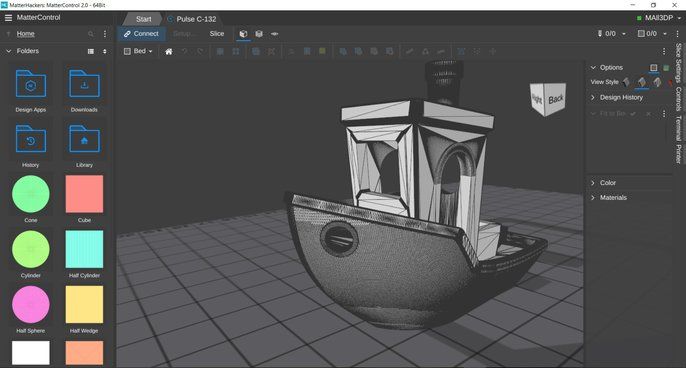 At the initial stage, the software is used for planning, visual ideation, modeling, feasibility assessment, prototyping, and project management.
At the initial stage, the software is used for planning, visual ideation, modeling, feasibility assessment, prototyping, and project management.
Try Solidworks
We earn a commission if you make a purchase, at no additional cost to you.
9. CATIACATIA (an acronym for computer-aided three-dimensional interactive application) is a multi-platform CAD/CAM/CAE commercial software suite developed by the French company Dassault Systèmes.
CATIA is the world’s leading solution for product design and experience.
It is used to design, simulate, analyse, and manufacture products in various industries, including aerospace, automotive, consumer goods, and industrial machinery, just to name a few.
CATIA is available on Microsoft Windows 64 and 64-bit environments and can be acquired as part of the Dassault Systèmes’ Product Lifecycle Management (PLM) Digital Product Experience (DPE), featuring the 3DEXPERIENCE platform.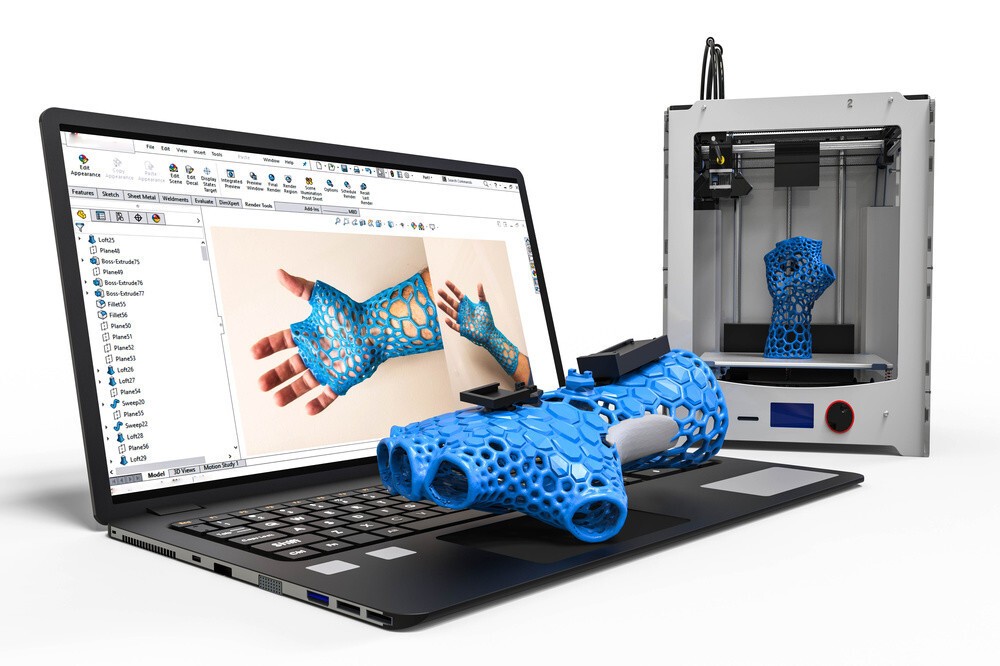
CATIA (Computer Aided Three-dimensional Interactive Application) is a multi-platform CAD/CAM/CAE commercial software suite developed by the French company Dassault Systèmes.
CATIA supports multiple stages of product development (CAx), including conceptualisation, design (CAD), engineering (CAE) and manufacturing (CAM).
The CATIA software was initially developed in 1977 by French aircraft manufacturer Avions Marcel Dassault and marketed as the Dassault Systemes product.
FeaturesCATIA Features The CATIA V5 Help Center provides you with a complete list of the available commands.
These command groups are organised into feature types, as shown below: 3D Sketcher 3D Wireframe and Surface Design Assembly Design Drafting Generative Shape Design.
ProsThe world’s first and most widely used 3D design software, CATIA has been at the centre of innovation for designers and engineers for over thirty years.
Dassault Systemes, CATIA’s parent company, makes 3D design models that create 2D drawings which can be used to build or manufacture anything from an aeroplane to a personal computer.
Companies and industries using CATIA include Airbus, Boeing, Coca Cola Ford Motor Company, Honda Motor Company, Mercedes-Benz Nasa Nissan Motor Company Proctor & Gamble.
10. OpenSCADOpenSCAD is a 2D/3D and solid modelling program based on a Functional programming language used to create models that are previewed on the screen and rendered into the 3D mesh, which allows the model to be exported in a variety of 2D/3D file formats.
A script in the OpenSCAD language is used to create 2D or 3D shapes.
This script is an accessible format list of action statements. The model is previewed on screen and rendered into the 3D mesh, which allows the model to be exported in various 2D/3D file formats.
The script is simply a list of action statements; you can easily modify it with any text editor to change your design.
OpenSCAD provides two main modelling techniques: First, there is constructive solid geometry (aka CSG), and second, there is extrusion of 2D outlines.
As data exchange, direct import of DXF files and DGN files (using Teigha File Converter) for 2D designs and 3MF files for both CSG trees and triangle meshes are supported.
FeaturesFeatures OpenSCAD is a 2D/3D and solid modelling program based on a Functional programming language used to create models that are previewed on the screen and rendered into the 3D mesh, which allows the model to be exported in a variety of 2D/3D file formats.
A script in the OpenSCAD language is used to create 2D or 3D models.
11. Rhinoceros 3DRhino can create, edit, analyse and translate NURBS curves, surfaces, and solids in Windows.
There are no limits on complexity, degree, or size beyond your hardware.
Rhino also supports polygon meshes and point clouds.
Rhino is used in the design, engineering, manufacturing, jewellery design, animation, motion graphics, 3D printing, etc.
Use Rhino for: CREATING ANY FORM YOU CAN IMAGINE Rhinoceros 3D is a commercial software used in computer-aided design (CAD), 3D modelling and computer graphics.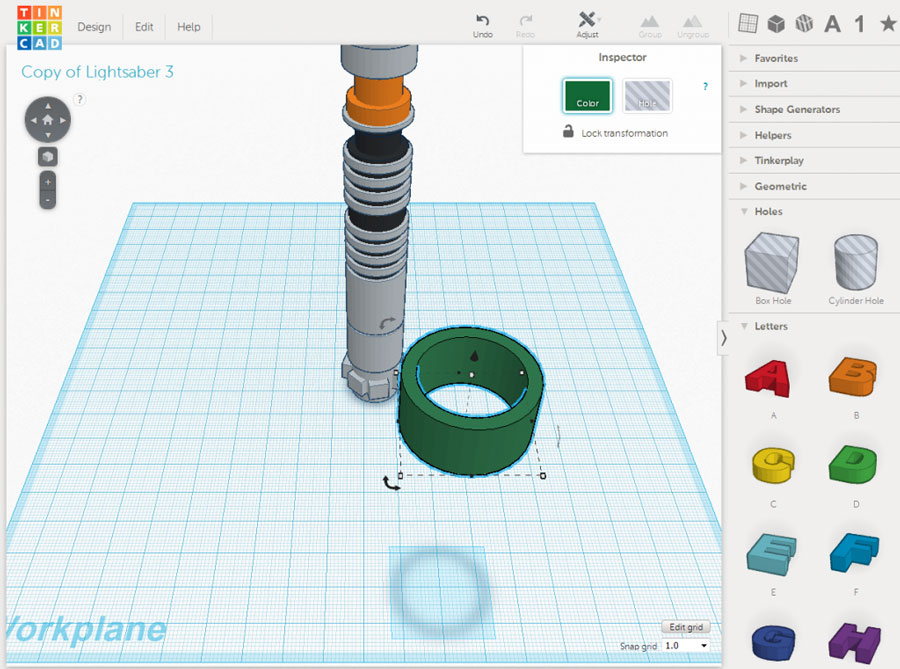
It is developed by Robert McNeel & Associates.
The software allows users to create precise freeform NURBS models of any size or shape.
Models created in Rhinoceros can be exported into various file formats, including IGES and STEP, for transfer into other CAD applications.
Rhinoceros is also used as a basis for Grasshopper, a parametric tool that works within Rhinoceros as a plug-in. Rhinoceros was initially developed by David Rutten at Robert McNeel & Associates in Seattle, Washington.
The initial version 1 release was developed by Rutten.
REC Wiki » Best 3D Printing Software in 2022
3D printing is a multi-step process, because you first need to design a 3D model, check it for errors, convert it to machine code, and only then the 3D printer goes into business . In this article, we will share examples of programs that can help at every stage of preparatory work and directly during 3D printing.
Contents:
1. 3D modeling software:
3D modeling software:
- Tinkercad
- ZBrushCoreMini
- 3D Builder
- SketchUp Free
- Fusion 360
- FreeCAD
- Blender
2. Editing and repairing STL files:
- Meshmixer
- MeshLab
3. Slicers:
- Cura
- PrusaSlicer
- ideaMaker
- ChiTuBox Basic
- Lychee Slicer
- Kiri:Moto
- IceSL
4. Control programs:
- OctoPrint
- MatterControl 2.0
- AstroPrint
5. G-code Visualizers
- UVTools
- WebPrinter
- Gcode Analyzer
- Design Software
1. 3D modeling software
If you are ready to create from scratch, you will have to learn special 3D modeling software. Many of them, especially professional computer-aided design systems, can be expensive investments, but on the other hand, there are plenty of quite capable and at the same time free offers on the market.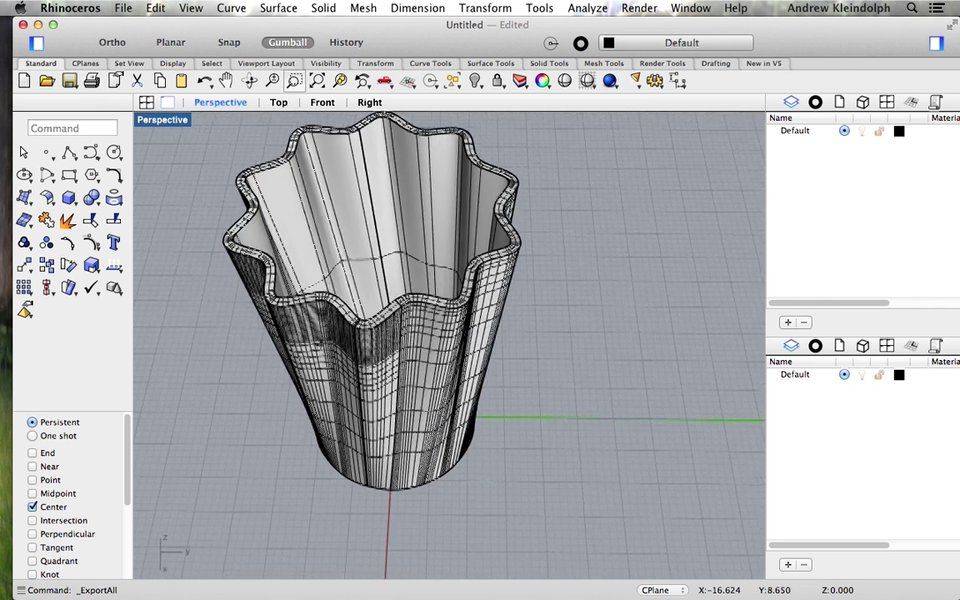
Tinkercad
Tinkercad is a browser-based application from Autodesk that is great for no-experience users, even kids, because of its simplicity. In this program, 3D models are built on the basis of basic blocks - simple geometric shapes that are joined together and then "filed" to the finished look. You can also convert 2D vector images into 3D models. Of course, you have to pay for simplicity - in the case of Tinkercad, rather primitive functionality that makes it difficult to create truly complex models. But such a task is not worth it: having gained basic skills on Tinkercad, you can always move on to more complex and more capable programs on our list.
Official website
ZBrushCoreMini
ZBrushCoreMini is primarily a 3D sculpting tool, especially popular among those who create human and animal figures, computer game characters, comics, and the like. This software is mainly aimed at beginners and users with moderate experience, but at the same time, it is full of impressive features that make the work easier.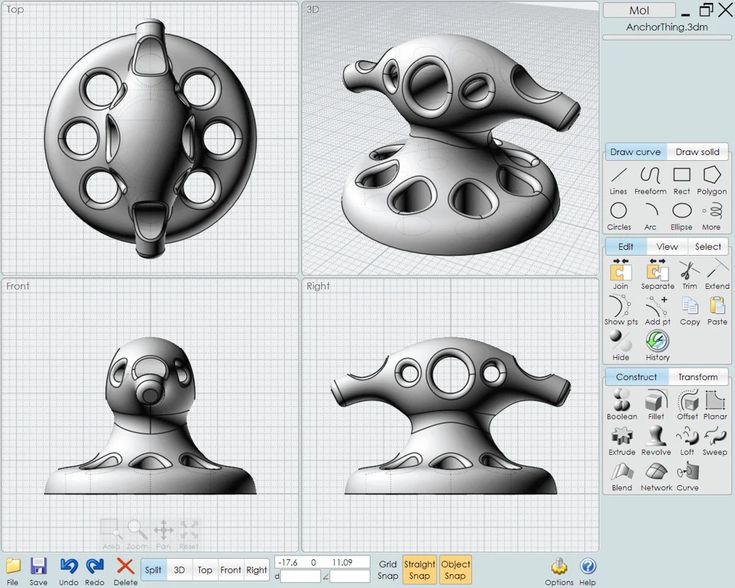 For example, dynamic tessellation algorithms constantly analyze the surface of the working model and automatically add polygons so that detail is not violated.
For example, dynamic tessellation algorithms constantly analyze the surface of the working model and automatically add polygons so that detail is not violated.
ZbrushCoreMini is offered free of charge and is positioned as an entry-level program for learning and gradually moving to more capable and complex options - ZBrush and ZbrushCore.
Official website
3D Builder
This program was developed by Microsoft and was included with Windows 10 for some time, although now it needs to be downloaded and installed separately. 3D Builder allows you to edit models in STL, OBJ, and 3MF formats, as well as create models from scratch. In this regard, the program is quite primitive, but it is simple and understandable even for novice modelers.
One of the interesting features of 3D Builder is the ability to simplify meshes by reducing the number of polygons, file weight and processing time in the slicer - useful in cases where the original designer obviously went too far with polygons. Additionally, you can import models from the library and even use Kinect sensors to 3D scan and import models of physical objects.
Additionally, you can import models from the library and even use Kinect sensors to 3D scan and import models of physical objects.
Official website
SketchUp
SketchUp is a web application with a great combination of simplicity and functionality. The user-friendly interface is intuitive and greatly facilitates learning, and the set of tools is quite diverse even for advanced users - hence the wide popularity of this program.
The free version was formerly called SketchUp Make, but is now simply called SketchUp Free. It includes everything you need for 3D modeling for 3D printing, just don't forget to download the module for exporting STL files - it's also free. The kit comes with 10 GB of storage for projects in the cloud and access to the 3D Warehouse, a repository with open source user-generated content.
Official site
Fusion 360
Professional CAD developed by Autodesk and famous for its ease of use and advanced functionality.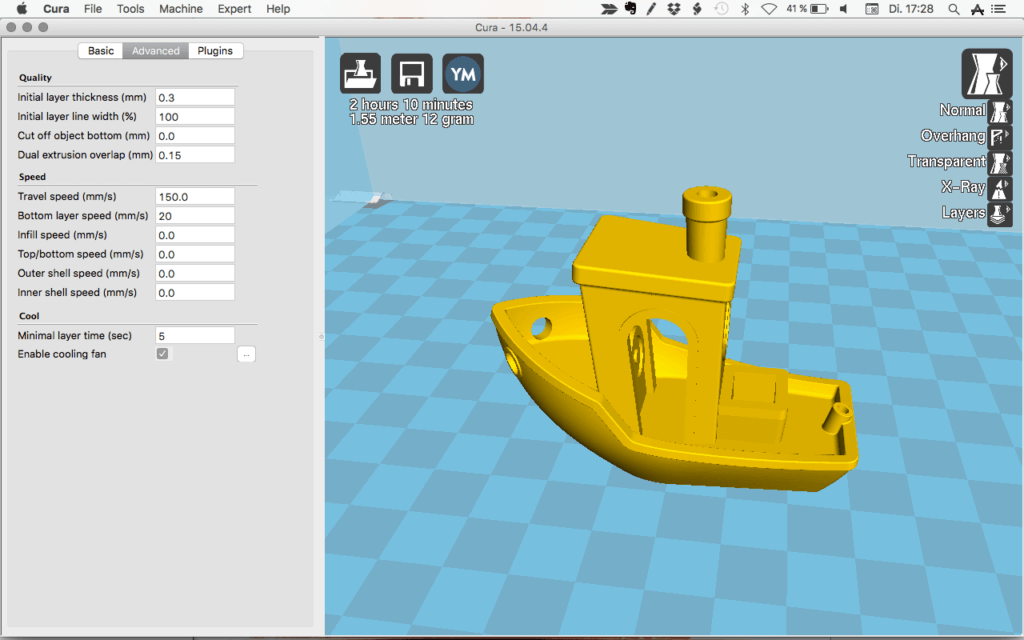 This includes parametric modeling and mesh analysis and load distribution tools, including through generative design with topological optimization. The program is great for those who are engaged in 3D printing of functional products, for example, for industrial applications.
This includes parametric modeling and mesh analysis and load distribution tools, including through generative design with topological optimization. The program is great for those who are engaged in 3D printing of functional products, for example, for industrial applications.
Some versions of Fusion 360, such as hobby and student versions, are even available free of charge. FreeCAD FreeCAD The program relies on a parametric approach: at any point in history, you can scroll back and make changes to the parameters. The program even includes finite element analysis and a robotic system simulator.
Official site
Blender
One of the most popular 3D modeling programs, but quite difficult to master. Not the best choice for a novice designer, but a great tool for those who have already gotten their hands on simpler editors. Fortunately, the popularity of Blender has led to a huge number of guides, tutorials, and visual examples published by experienced users for beginner colleagues.
Developers are trying to make the program more convenient without sacrificing functionality: the interface has recently been updated, rendering has been improved, and 3D design and animation capabilities have been expanded. And yes, it's open source and freeware, so you don't risk anything.
Official site
2. Editing and repairing STL files
If you find an interesting 3D model on the Internet, this does not mean that it can be immediately sent to a 3D printer. Many models are created for completely different needs, such as animations or video games, and in principle are not intended for 3D printing. But there is a solution: before processing such models into G-code, they must first be repaired so that the slicer can do its job well. The following programs on our list will help you cope with the repair.
Meshmixer
Meshmixer is an advanced and free program from Autodesk that allows you to view and check 3D models for errors in polygonal meshes that can ruin 3D printing. If such problems are detected, the program can automatically repair meshes. One example of an application is finishing 3D scans to a state suitable for 3D printing.
If such problems are detected, the program can automatically repair meshes. One example of an application is finishing 3D scans to a state suitable for 3D printing.
Additional functionality includes mesh blending, 3D sculpting, surface writing, cavity creation, support branching, mesh smoothing, and more.
Official website
MeshLab
MeshLab is another open source program for editing polygonal meshes. MeshLab has the necessary tools for editing, checking, cleaning and converting meshes with the ability to combine meshes into one model and patch holes that can lead to incorrect processing of models into G-code.
Official website
3. Slicers
After receiving a 3D model, it must be converted into machine code - a series of commands understandable to CNC machines, including 3D printers. Slicers are responsible for this task - programs that accept digital models (usually in the form of files with STL, OBJ or 3MF extensions), analyze their structure, and then compile lists of actions for 3D printers, called G-code (Gcode). Such lists contain all the information necessary for the equipment: to what temperature to warm up the extruders and tables, whether to use airflow, along what trajectory and at what pace to lay the plastic.
Such lists contain all the information necessary for the equipment: to what temperature to warm up the extruders and tables, whether to use airflow, along what trajectory and at what pace to lay the plastic.
Cura
Cura is a slicer from the Dutch company Ultimaker, designed primarily for proprietary 3D printers, but open source and compatible with most other FDM/FFF systems. The program is easily customizable with various plugins. Since this is a very popular program, the chances are that it already has a profile with optimal settings for your 3D printer. If not, then nothing prevents you from creating a profile manually or using profiles prepared by other users.
The program has several levels of difficulty depending on the level of training - basic, advanced, expert and complete. The higher the level, the more access to customizable options. At a basic level, the program takes the bulk of the work on itself, helping inexperienced users.
Cura is constantly being developed and improved through regular updates and is also offered free of charge, although a paid version of Cura Enterprise is available to professional users with licensed plug-ins from the Ultimaker Marketplace, technical support and additional security measures.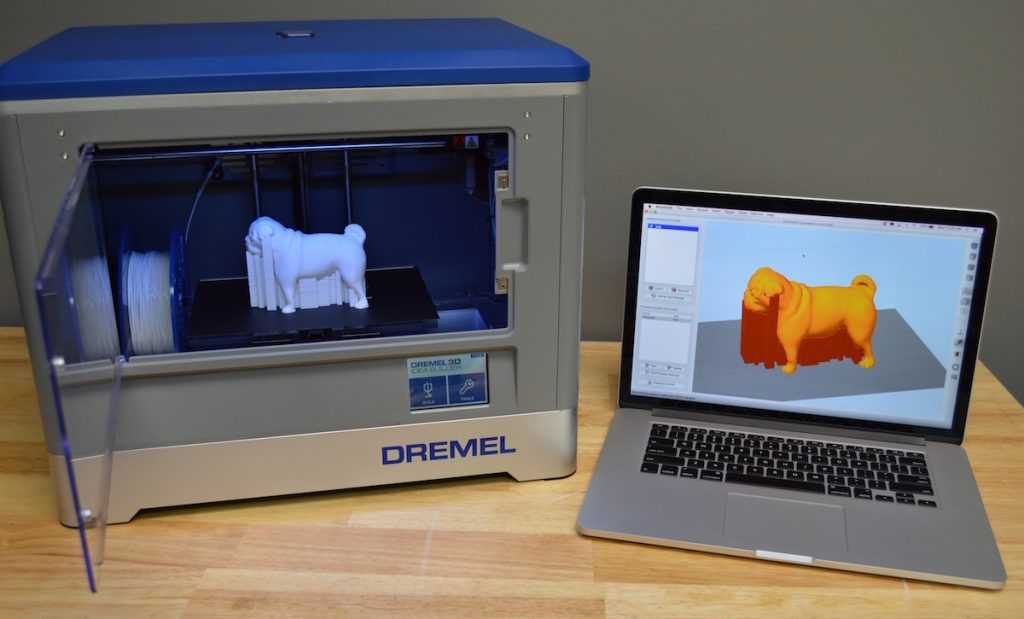
In addition to converting 3D models to G-code, Cura can also take on the role of a control program, but this will require a constant connection between the 3D printer and the computer throughout the 3D printing. Professionals appreciate another feature of Cura - seamless integration with professional computer-aided design systems such as SolidWorks and Siemens NX.
In general, Сura is suitable even for novice users, especially since a huge number of training videos and step-by-step guides are available for this program, both from developers and enthusiasts.
Official website
PrusaSlicer
3D printer manufacturer Prusa Research, under the leadership of the legendary Czech engineer Josef Prusa, whose designs are copied and refined around the world, has developed its own open source software based on the Slic3r slicer. PrusaSlicer quickly gained popularity as it not only retains the original program's extensive customizations, but also adds a number of useful features not found in Slic3r.
A redesigned interface, support for Original Prusa branded 3D printers, and profiles with settings to work with many common polymers are just some of the improvements. Additionally, algorithms for generating support structures have been improved, support for multimaterial 3D printing and the ability to dynamically adjust the layer thickness have been added.
PrusaSlicer can process models not only for FDM 3D printers, but also for stereolithographic systems printing with photopolymers. As with Cura, the user can select a difficulty level with appropriate access to fine-tuning.
Official website
ideaMaker
Raise3D's slicer is optimized for branded additive hardware in the same way that PrusaSlicer is optimized for Original Prusa 3D printers, and Cura is optimized for Ultimaker 3D printers, but this does not mean that it cannot be use with third party systems. The organization of workflows and the interface is somewhat more complicated than in Cura and PrusaSlicer, but on the other hand, ideaMaker allows you to set up individual layers and apply textures for product customization.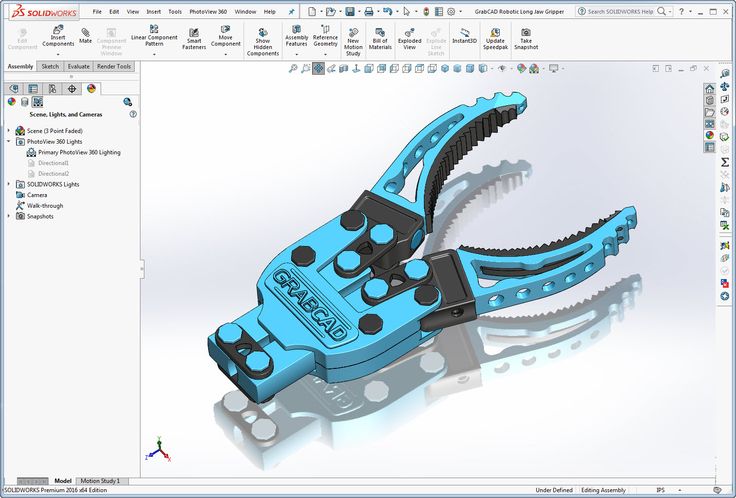
ideaMaker users can connect to the cloud platform and access hundreds of 3D printer profiles and materials created by other operators, or create their own library of settings.
Add the ability to customize support structures, split models for more efficient 3D printing of large parts, integrated mesh repair tools, and OctoPrint compatibility, and you have a flexible, versatile program to suit the needs of most 3D printers.
Official website
ChiTuBox Basic
This is a specialized slicer for those who use stereolithographic 3D printers that print with photopolymer resins. Most budget LCD masked stereolithography (MSLA) 3D printers rely on motherboards and firmware from ChiTu Systems, which also developed this software.
Users gain control over technology-specific parameters such as layer exposure time, as well as access to predefined profiles with settings for many popular 3D printers. The slicer takes into account such moments as the orientation of the model and the automatic construction of support structures with the possibility of manual optimization.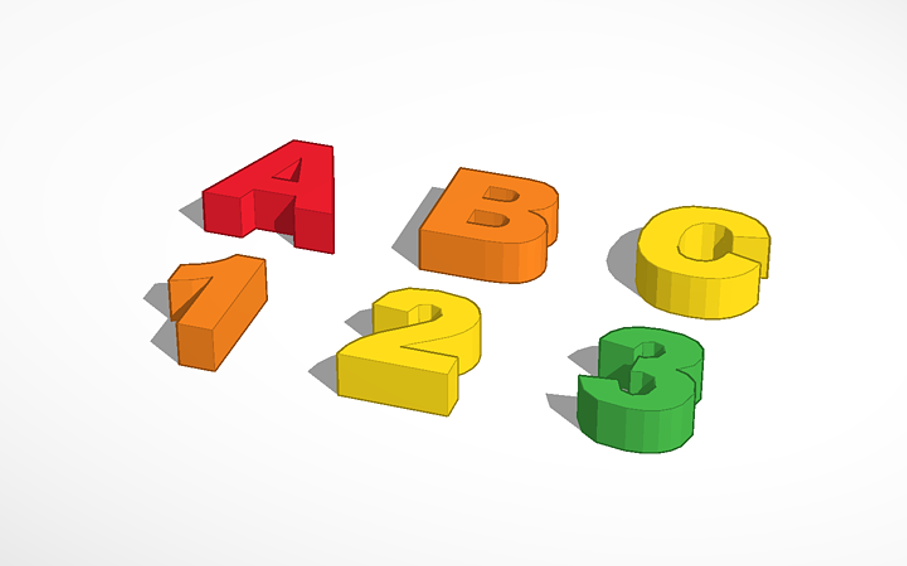
Official website
Lychee Slicer
A program from the independent Franco-Belgian team Mango 3D, not associated with 3D printer manufacturers, but with support for many popular stereolithographic 3D printers, including those from Elegoo, Anycubic, Phrozen and Creality.
One of the features of this program is the high level of automation. If you wish, you can simply click on the "magic" button (it's called Magic), and the slicer will do everything by itself: it will orient the model on the platform, generate supports, and so on. Although, here you are lucky: the results are not always optimal, but usually adequate for relatively simple models. Otherwise, everything can be configured manually.
The program is offered in free and paid versions. The functionality of the free version is slightly reduced, but it has everything you need.
Official site
Kiri:Moto
Browser solution for those who lack computing power. Kiri:Moto can prepare 3D models for both 3D printing and laser engraving or milling. The settings are somewhat more primitive than in locally installed slicers, but are sufficient for most users.
Kiri:Moto can prepare 3D models for both 3D printing and laser engraving or milling. The settings are somewhat more primitive than in locally installed slicers, but are sufficient for most users.
Official website
IceSL
IceSL is a combination software that combines slicing with 3D modeling. In the left window, you can edit 3D models using scripts in the Lua language, which makes it possible to perform parametric modeling. On the right side, the 3D printing settings are displayed. For beginners, pre-configured settings are available, while experienced users can take advantage of features such as specific adjustment of parameters for individual layers with automatic gradation of intermediate areas. For example, this allows you to gradually reduce or, conversely, increase the filling density of the product as it is built, or gradually change the thickness of the layers.
Official website
4. Control programs
Control programs are designed for exactly this - managing workflows during 3D printing.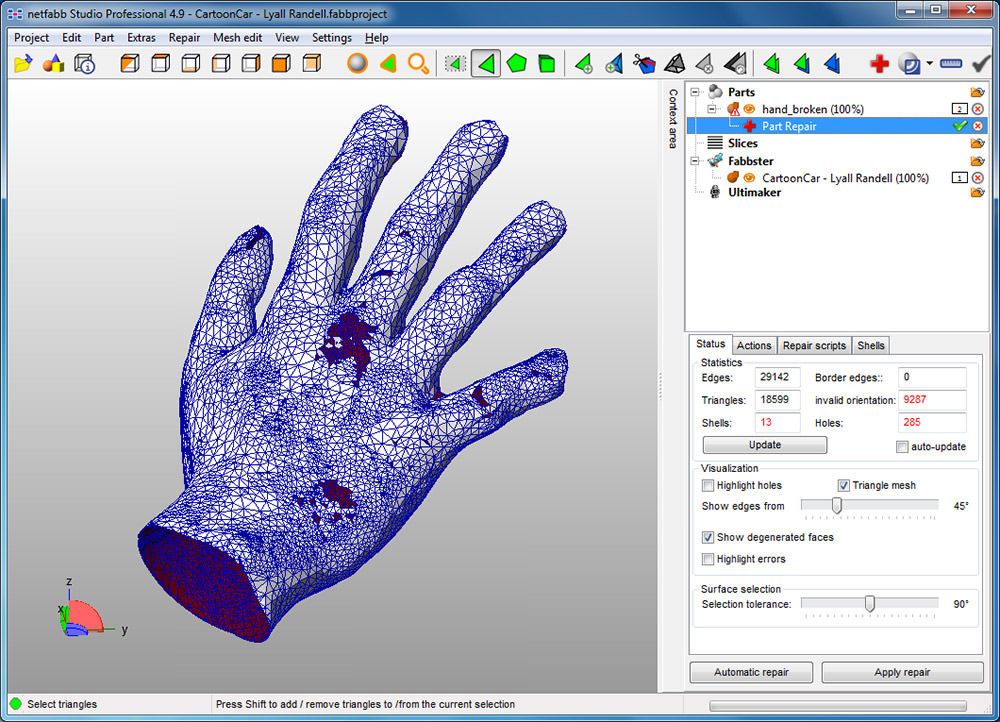 Although you can insert a G-code drive into almost any 3D printer and press the start button, this is not always convenient, especially when you have to work with several 3D printers at the same time, and even more so when you do it remotely. This is where control programs come to the rescue. In addition, some of them offer additional functionality, including slicing and even editing 3D models.
Although you can insert a G-code drive into almost any 3D printer and press the start button, this is not always convenient, especially when you have to work with several 3D printers at the same time, and even more so when you do it remotely. This is where control programs come to the rescue. In addition, some of them offer additional functionality, including slicing and even editing 3D models.
OctoPrint
A web-based appliance that requires connection to a 3D printer via a microcomputer such as a Raspberry Pi equipped with a Wi-Fi module. This system allows you to control 3D printers remotely. OctoPrint accepts G-code from almost any slicer and provides the ability to visualize - view files before and during 3D printing. Alternatively, STL files can be loaded and processed directly in OctoPrint.
OctoPrint not only provides all the necessary tools for remote management, but also allows you to track the work in progress using notifications via various instant messengers.
This is a completely free, open source program with many plug-ins created by enthusiasts and available on the official website.
Official website
MatterControl
MatterHackers offers its own control program, slicer and 3D editor in one package. MatterControl allows you to directly control and observe 3D printing, slice, export G-code to SD cards for offline printing, and even create 3D models from scratch. The 3D printer will need a Wi-Fi or USB connection to run MatterControl.
The interface is well structured: on the left side there is a file browser and a library of simple geometric shapes. Interestingly, these shapes can be dragged into the 3D model and used as support structures.
Basic functionality is available in the free basic version, advanced users can pay to upgrade to MatterControl Pro.
Official website
AstroPrint
AstroPrint is a cloud-based management platform that allows you to remotely monitor and control multiple 3D printers simultaneously, store files, convert 3D models to G-code, and track workflow statistics.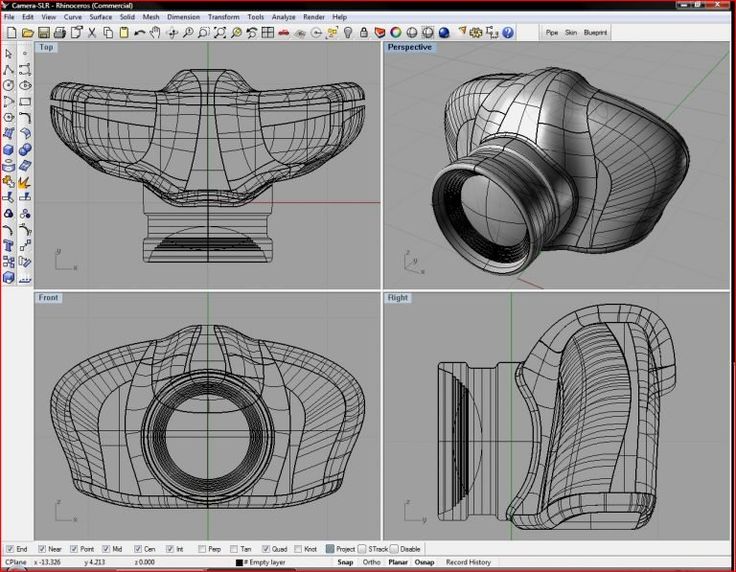 The functionality ranges from basic in the free version to advanced with different levels of paid subscriptions.
The functionality ranges from basic in the free version to advanced with different levels of paid subscriptions.
The 3D printer will require a Wi-Fi module to fully work with AstroPrint. In conjunction with the Raspberry Pi, the system is similar in functionality to OctoPrint: you can process models and send the finished code to a 3D printer via a web interface without the need for additional software. Another plus is integration with popular repositories of 3D models Thingiverse and MyMiniFactory, as well as 3D editors 3D Slash and Leopoly.
Official website
5. Programs for visualizing G-code
What if you find an old file with a G-code, but you have no idea what it is and why - maybe garbage, or maybe an excellent, but long-forgotten model without a clear marking in the file name? The programs in this section will help you visualize the contents of such files.
UVTools
This program combines file browsing with layer editing and even model repair for stereolithographic 3D printing.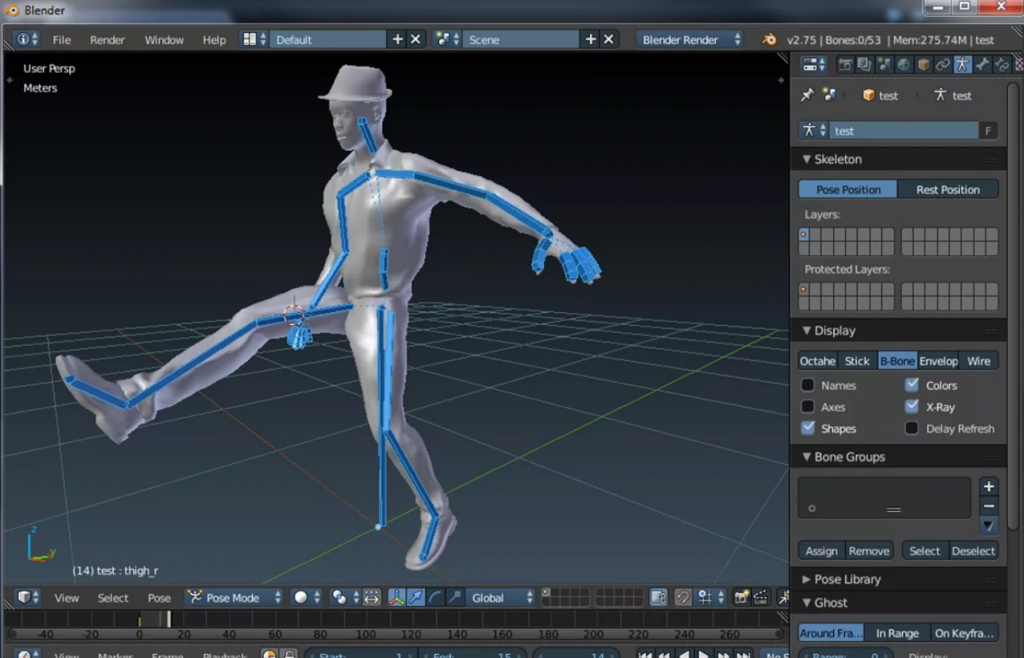 The program can also be used as a plug-in for PrusaSlicer, adding support for third-party photopolymer 3D printers - although PrusaSlicer is open source, support for stereolithographic systems is still limited to branded equipment. At the same time, UVTools allows you to print calibration samples to check the exposure time and other parameters, which can be useful, for example, when working with new photopolymers that have not yet been tested.
The program can also be used as a plug-in for PrusaSlicer, adding support for third-party photopolymer 3D printers - although PrusaSlicer is open source, support for stereolithographic systems is still limited to branded equipment. At the same time, UVTools allows you to print calibration samples to check the exposure time and other parameters, which can be useful, for example, when working with new photopolymers that have not yet been tested.
Official website
WebPrinter
A simple browser tool for quick G-code preview, developed by the same team that created the IceSL slicer and 3D editor. The application works very simply: follow the link, upload the file with the G-code and see how the 3D printer will grow the model according to the commands provided. Unfortunately, the functionality is limited: for example, the application does not provide information about temperature settings. On the other hand, you can quickly figure out what kind of model is hidden in a file with an incomprehensible name.
Official website
Gcode Analyzer
An old but still very capable and popular G-code analysis web application. The 3D simulation doesn't work very well, but the 2D and G-code previews work great. In 2D mode, you can conveniently view individual layers, moving from layer to layer and following the construction path step by step using two sliders. G-code viewer displays a complete list of commands, allowing you to see what a particular line of code is doing.
Official website
Adapted translation of The Best Free 3D Printing Software of 2022 article.
Top 20 Free 3D Printing and 3D Printing Software
Looking for 3D printing software? We've rounded up the top 20 software tools for beginners and professionals alike. Most slicers are free.
What is a slicer? This is a program for preparing a digital model for printing. Models for 3D printing are usually distributed in STL files. To turn an STL file into G-code (a language that a 3D printer understands), a slicer program is required. It is called a slicer because it cuts (to slice - English) a 3D model into many flat two-dimensional layers, from which a 3D printer will add a physical object.
To turn an STL file into G-code (a language that a 3D printer understands), a slicer program is required. It is called a slicer because it cuts (to slice - English) a 3D model into many flat two-dimensional layers, from which a 3D printer will add a physical object.
Which slicer should I choose? In this article, we will tell you which slicer is the best choice for 3D printing for each stage of your work. Which one is better for preparing a 3D model for printing? But what if you need to create a 3D model from scratch? And if you are only taking the first steps in 3D?
Don't be afraid: we've answered all of these questions, including the required skill level for each program and where you can download it. The great thing is that most of these programs are completely free and open source.
- Cura
- CraftWare
- 123D Catch
- 3D Slash
- TinkerCAD
- 3DTin
- Sculptris
- ViewSTL
- Netfabb Basic
- Repetier
- FreeCAD
- SketchUp
- 3D Tool
- Meshfix
- Simplify3D
- Slic3r
- Blender
- MeshLab
- Meshmixer
- OctoPrint
#1: Cura
For beginners who need a slicer to prepare STL files for 3D printing
Cura is the default slicer software for all Ultimaker 3D printers, but can be used with most others , including RepRap, Makerbot, Printrbot, Lulzbot and Witbox. The program is completely open source, its capabilities can be extended using plugins.
The program is completely open source, its capabilities can be extended using plugins.
This program is very easy to use and allows you to manage the most important 3D printing settings through a clear interface. Start in Basic mode to quickly get up to speed and change print quality settings. If finer control is required, switch to Expert mode.
Cura can also be used to directly control the printer, but then the printer and computer must be connected to each other.
Download: Cura
Price: Free
Systems: PC, Mac, Linux
#2: CraftWare
3D printers by the Hungarian startup CraftUnique to support their CraftBot crowdfunding machine. However, the program works with other printers.
Like Cura, CraftWare allows you to switch from "Easy" to "Expert" mode, depending on how confident you feel. It's a colorful app that features a visual G-code visualization with each function represented by a different color. But the most outstanding feature is the individual support service. As far as we know, only the paid program Simplify3D has this.
As far as we know, only the paid program Simplify3D has this.
Please note, however, that this program is still in beta, so bugs may occur.
Download: CraftWare
Price: Free
Systems: PC, Mac
#3: 123D Catch
-systems, smartphones and tablets, which allows you to convert images of objects into a 3D model. Pictures can be taken with a smartphone/tablet or digital camera.
You need many photos of the object from different angles - the more the better - after which they will be compiled into a 3D model.
123D Catch is more of a fun app than a professional 3D printing tool, but after some tambourine dancing, you can get good results, especially when paired with an STL editor like MeshLab or Meshmixer.
Price: Free
Systems: PC, Android, iOS, Windows Phone
#4: 3D Slash
and surprisingly simple, and refreshingly new. With 3D Slash, you can design 3D models using your dice skills.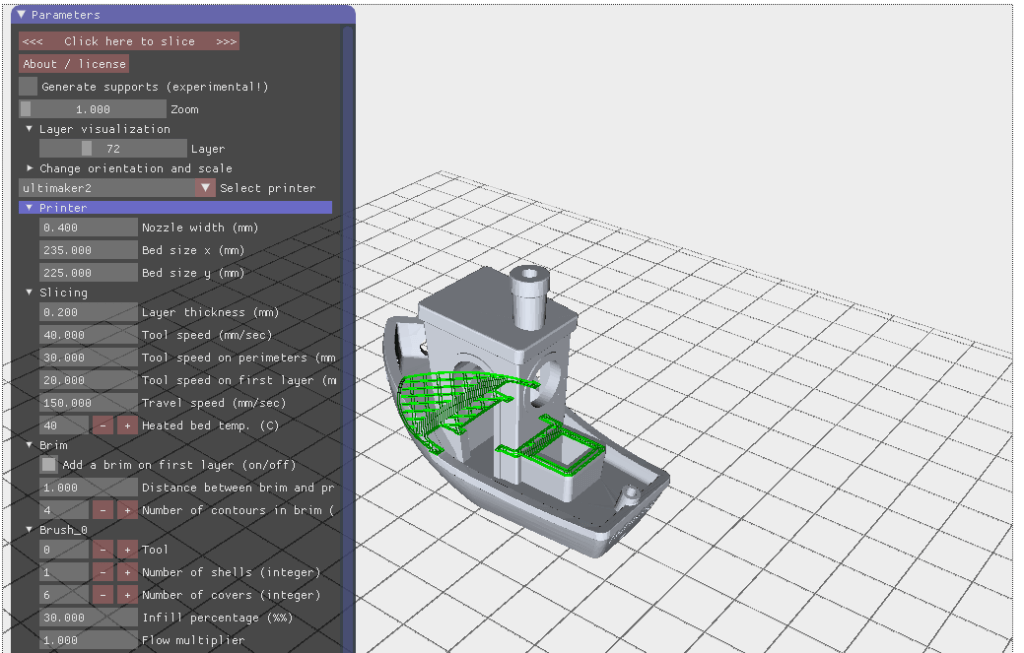
You can start with a large block and, like a virtual sculptor, remove small cups from it with tools such as a hammer or drill, or start from empty space and build a model from cubes and other shapes. You can paint with flowers or use template pictures.
Other features worth mentioning are tools for creating logos and 3D text. The Logo Wizard imports an image and creates a 3D model, while the Text Wizard allows you to enter and format text, and then turn it into 3D.
Recommended!
Download: 3dslash.net
Price: Free
Systems: PC, Mac, Linux, Browser
#5: TinkerCAD
- A computer-aided design (CAD) system for 3D printing, which is a good starting point for beginners. Since its capabilities are limited compared to Blender, FreeCAD and SketchUp, many users switch to more powerful tools after some time.
As in 3D Slash, here you can build models from basic shapes. At the same time, unlike 3D Slash, TinkerCAD allows you to create vector shapes in 2D and convert them into three-dimensional models.
Come in: Autodesk TinkerCAD
Price: Free
Systems: Browser
#6: 3DTin
For beginners who want to create 3D models for printing
online is another easy and intuitive tool choice for beginners in 3D modeling. All you need is a Chrome or Firefox browser with WebGL enabled.
Choose from a huge library of 3D shapes and add them to your sketch. All sketches are stored in the cloud, access to them is free if you honor the Creative Commons license. Everything can be exported to STL or OBJ formats.
Enter: 3DTin
Price: Free
Systems: Browser
#7: Sculptris
For beginners who want to create 3D printable models
clay. This is a fantastic 3D modeling program if figurines are your main task. For example, you can make a bust of your favorite video game or comic book character. Sculptris is completely free and bills itself as a stepping stone to the more complex (and expensive) ZBrush tool.
Download: Pixologic Sculptris
Price: Free
Systems: PC, Mac
#8: ViewSTL
For beginners who want to view STL files
ViewSTL is the easiest way to view STL files . Simply open a web page and drag the STL onto the dotted box.
The STL online viewer allows you to display the model in one of three views: flat shading (for a quick view), smooth shading (for a high-quality image), and wireframe.
Enter: ViewSTL
Price: Free
Systems: Browser
#9: Netfabb Basic
some nice features that allow you to analyze, "repair" and edit STL files before moving on to the model cutting stage.
A good choice if you need more than just a slicer and want to be able to quickly fix STL files without having to learn programs like MeshLab or Meshmixer.
Don't let the 'Basic' in the name fool you, Netfabb Basic is actually a very powerful 3D printing tool. It's "basic" only in the sense that it doesn't cost €1,500 like Netfabb Professional!
Download: netfabb.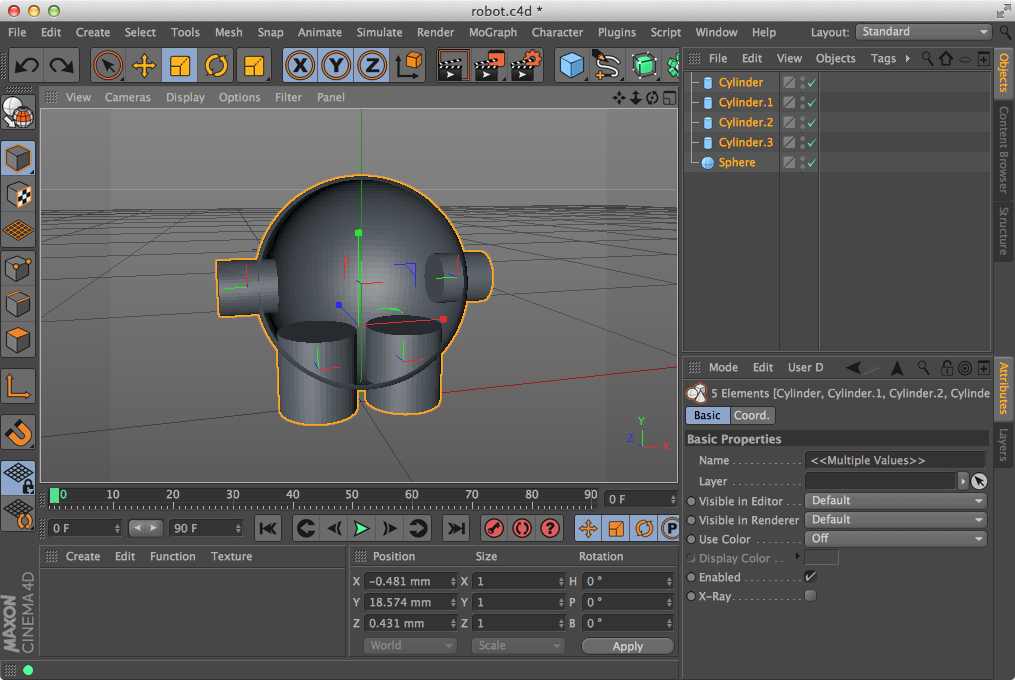 de
de
Price: Free
Systems: PC, Mac, Linux
No. 10: Repetier
For advanced to prepare STL files for 3D printing
9002 the next level of 3D printer slicer software, but if you want to stay open source, you should look into Repetier. It is the great grandfather of 3D printing software and a favorite of the RepRap community.Today the program is moving by leaps and bounds from the level for beginners to advanced users. Packaged in an all-in-one configuration, it supports up to 16 extruders, multi-slicing via plug-ins, and virtually every fusing 3D printer on the market. Get ready to tinker!
What's more, Repetier Host works remotely via Repetier Server, so that the 3D printer can be controlled via a browser, tablet or smartphone.
Download: Repetier
Price: Free
Systems: PC, Mac, Linux
#11: FreeCAD
The program is a great option for developing your design skills. More technically, this parametric 3D modeling program allows you to easily change the project by rolling back through the history of the model and editing the parameters.
Download: freecadweb.org
Price: Free
Systems: PC, Mac, Linux
#12: SketchUp
For beginners who want to create 3D printable models
SketchUp functionality, with a user-friendly interface and a relatively flat learning curve (i.e., as experience grows with the time spent), the ideal program for developing three-dimensional models.
The Make SketchUp version is free and will have everything you need for 3D modeling if you also download and install the free STL exporter. There is also a professional edition for architects, interior designers and engineers.
Download: sketchup.com
Price: Free (SketchUp Make), $695 (SketchUp Pro)
Systems: PC, Mac, Linux
#13: 3D-Tool Free Viewer
view and check STL files
3D-Tool Free Viewer is a sophisticated tool that, among other things, allows you to check the structural integrity and printability of your file. With the Cross-Section function, for example, you can look at the model from the inside and check the wall thickness.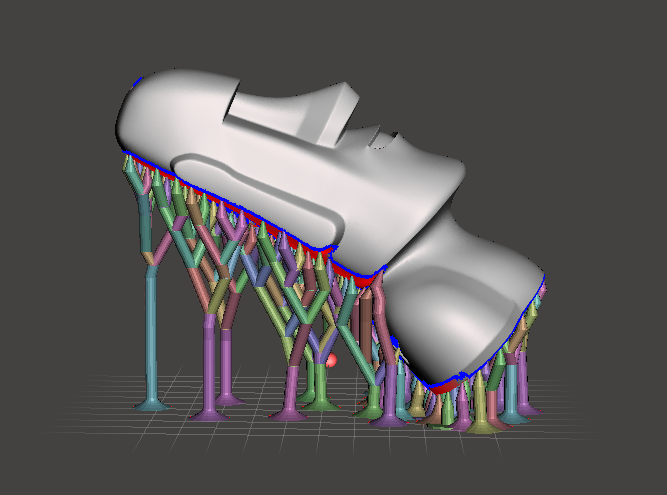 Very useful if you want to check your STL file for killer errors before printing.
Very useful if you want to check your STL file for killer errors before printing.
Download: 3D-Tool
Price: Free
Systems: PC
#14: Meshfix
your model for errors.
Price: Free
Systems: Browser
#15: Simplify3D
For professionals to prepare STL files for 3D printing print. A flexible algorithm checks the model for problems, fixes them, shows a preview of the printing process (ideal for identifying potential problems), and then slices it.
This slicer offers the best infill pattern options in the competition. For models that require supports, Simplify3D will create the appropriate structures on its own and give you full control over their placement. For printers with a dual extruder, when printing with different materials, the Dual Extrusion wizard will help, as a result of which, for example, it will be easier to remove the dissolving filament.
Simplify3D supports 90% of today's commercially available desktop 3D printers and is compatible with Marlin, Sprinter, Repetier, XYZprinting, FlashForge, Sailfish and MakerBot firmware.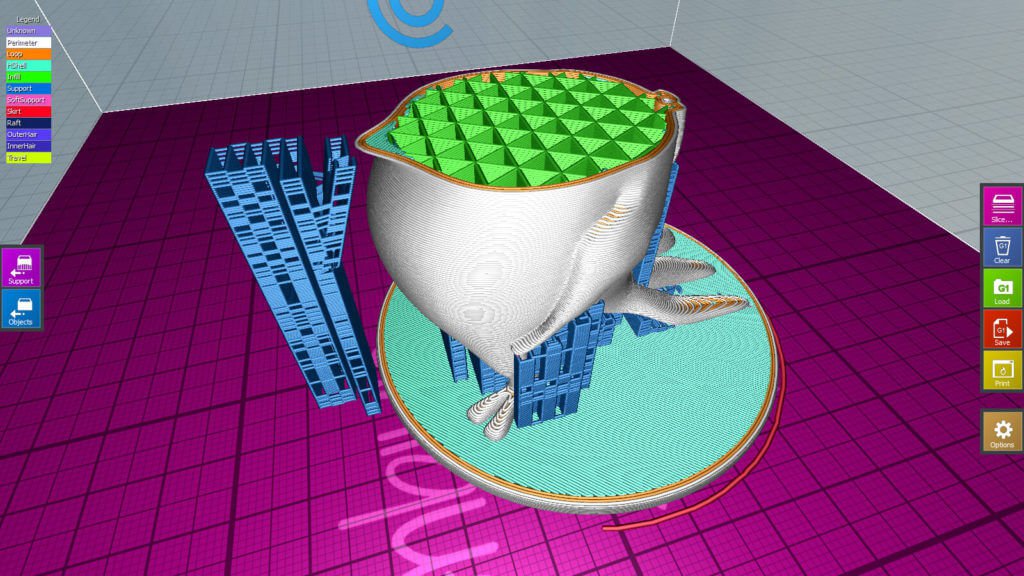 Simplify3D can also be used to directly control the printer, but then the printer and computer must be connected to each other.
Simplify3D can also be used to directly control the printer, but then the printer and computer must be connected to each other.
Download: simplify3d.com
Price: $149
Systems: PC, Mac, Linux
#16: Slic3r
source code, which has a reputation as a carrier of super new functionality, which you will not find anywhere else. The current version of the program is able to show the model from multiple angles, so that the user gets a better preview experience.
There's also an incredible 3D honeycomb infill, the first of its kind that can extend over multiple layers rather than repeating itself like a stamp. This significantly increases the strength of the internal filling of the model and the final printout.
Another option is direct integration with Octoprint. Once the files on the user's desktop are sliced, they can be directly uploaded to Octoprint with one click.
Download: Slic3r
Price: Free
Systems: PC, Mac, Linux
#17: Blender
For professionals who want to create 3D printable models
Blender is a popular computer-aided design (CAD) system with a steep learning curve.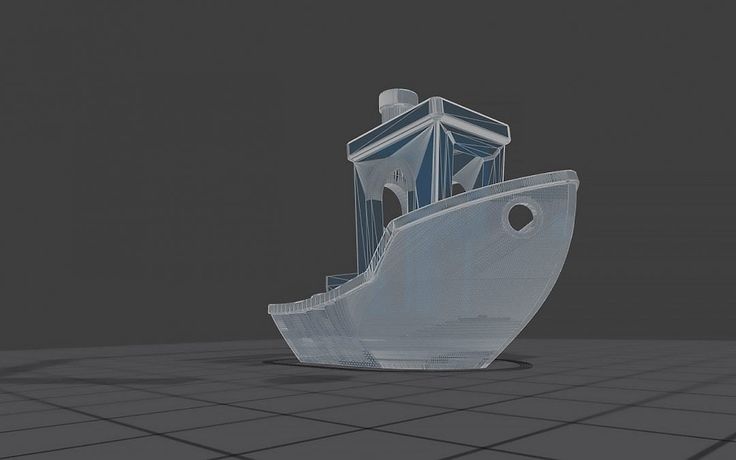 Not at all the best choice for beginners, but what you need if you are quite experienced and need something more complex for modeling and printing.
Not at all the best choice for beginners, but what you need if you are quite experienced and need something more complex for modeling and printing.
In short, Blender is one of the most powerful tools in existence. Its community is always ready to help, there are a lot of educational materials. It's also open source, so enthusiasts often write extensions to make it even better and more powerful.
Download: blender.org
Price: Free
Systems: PC, Mac, Linux
#18: MeshLab
For professionals to prepare STL files for 3D printing
MeshLab - advanced editor. It allows you to remove parts of a 3D model, merge two models into one, patch holes. If you need a program to modify models for 3D printing or some kind of "repair" work, MeshLab is the right choice.
Price: Free
Systems: PC, Mac, Linux
#19: Meshmixer
For professionals to prepare STL files for 3D printing files. It's especially good for identifying potential problems and fixing them automatically.




